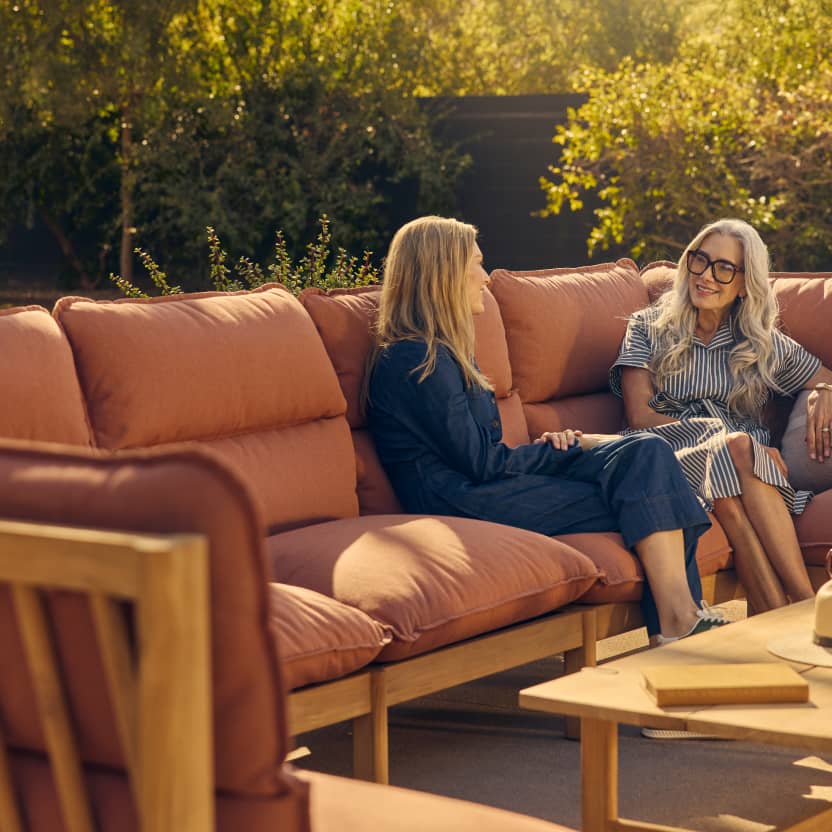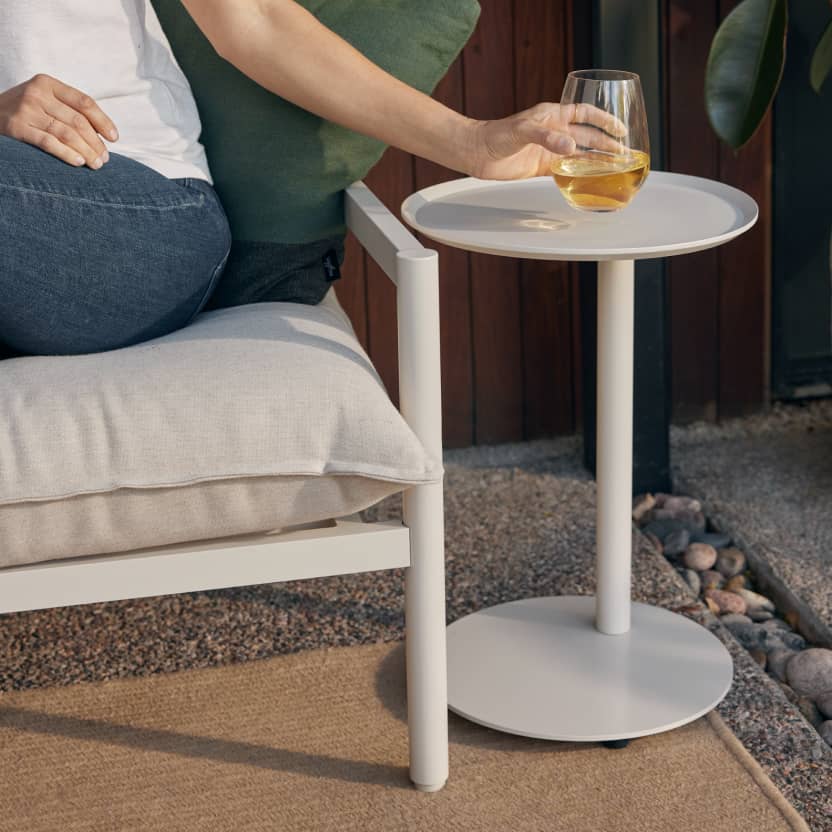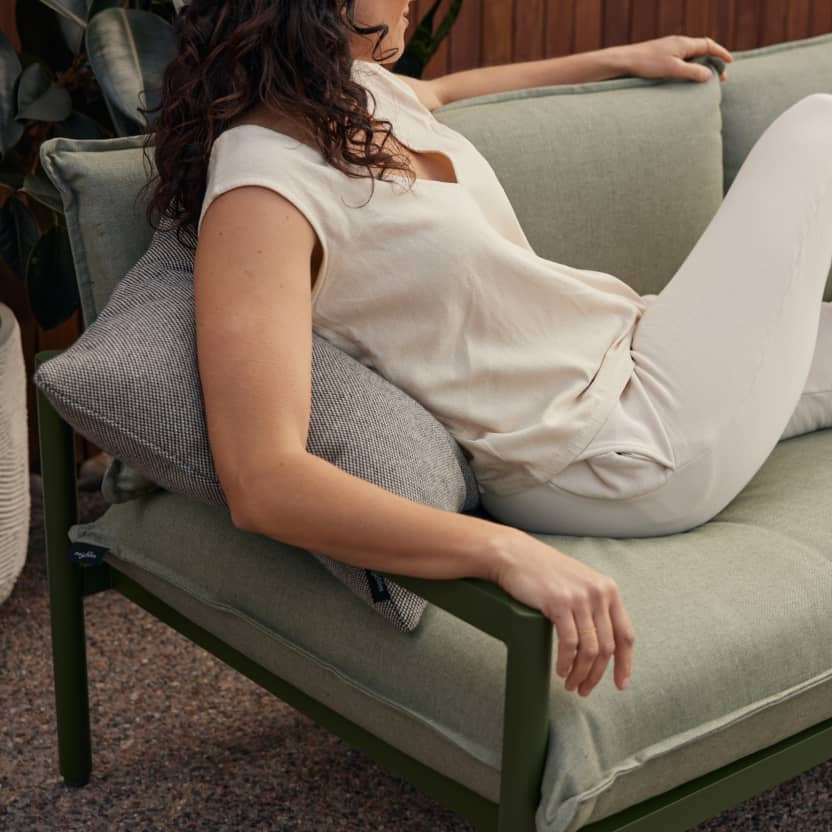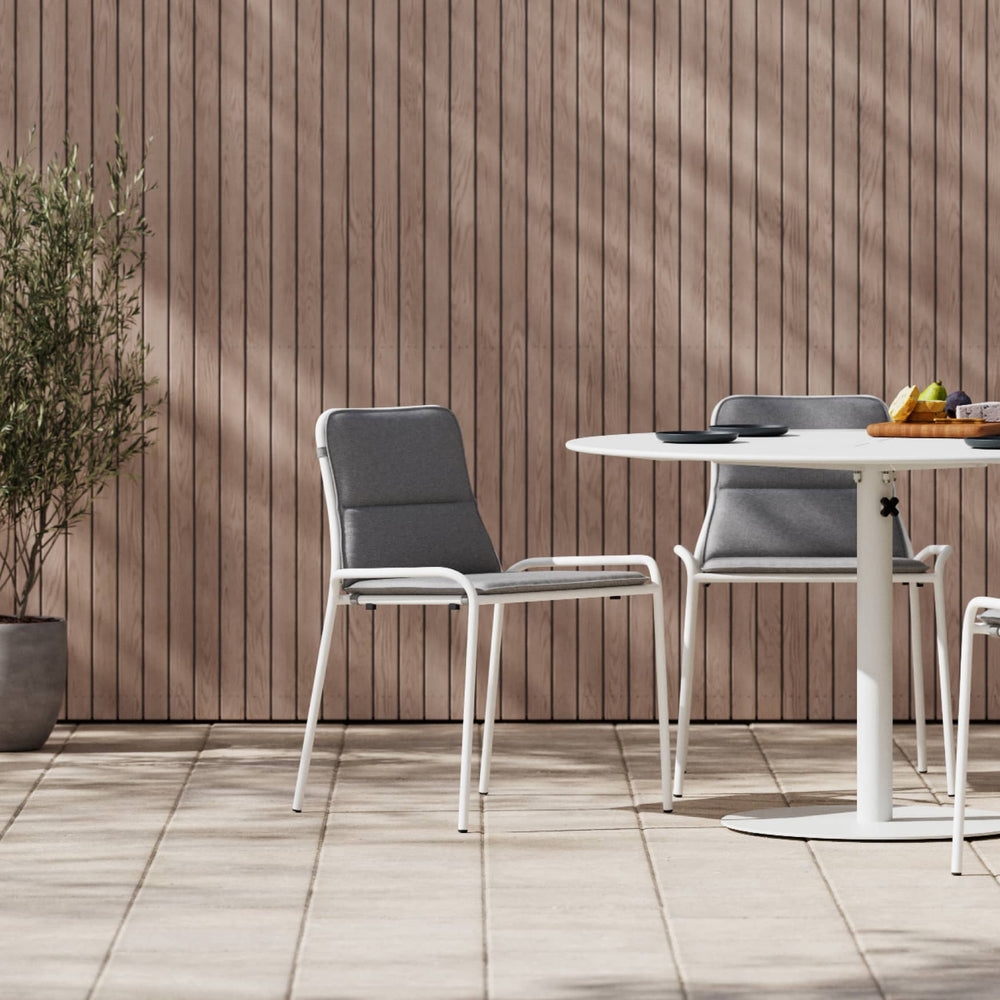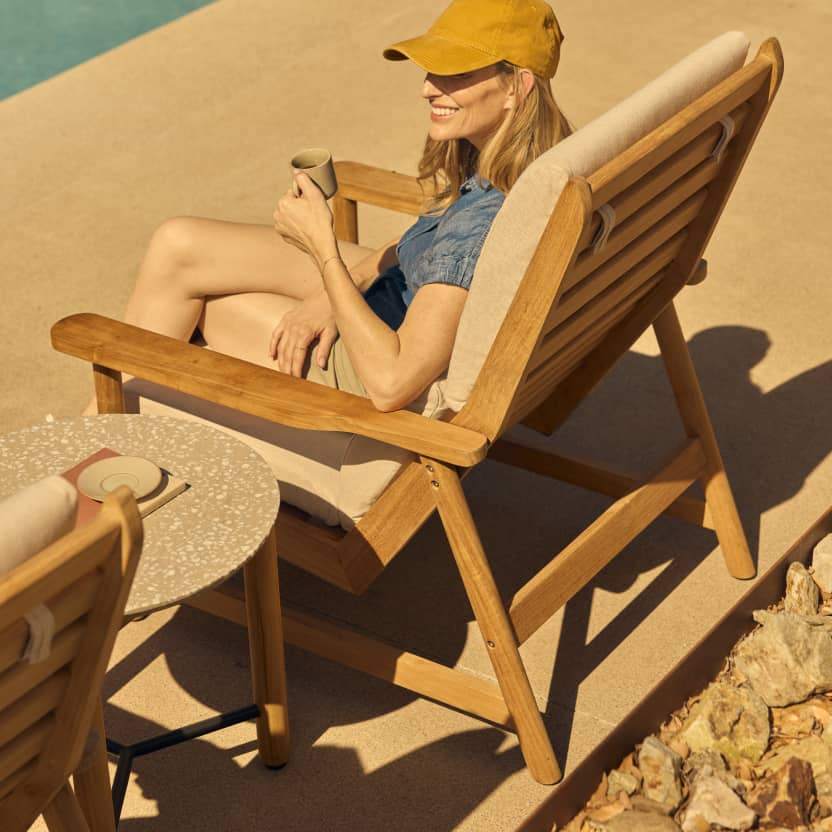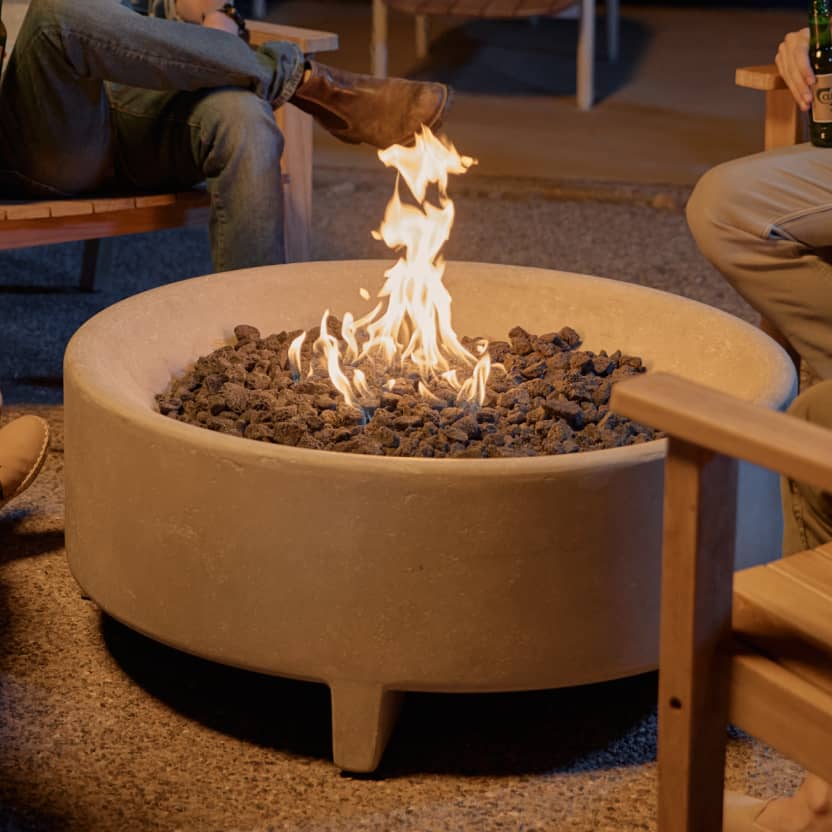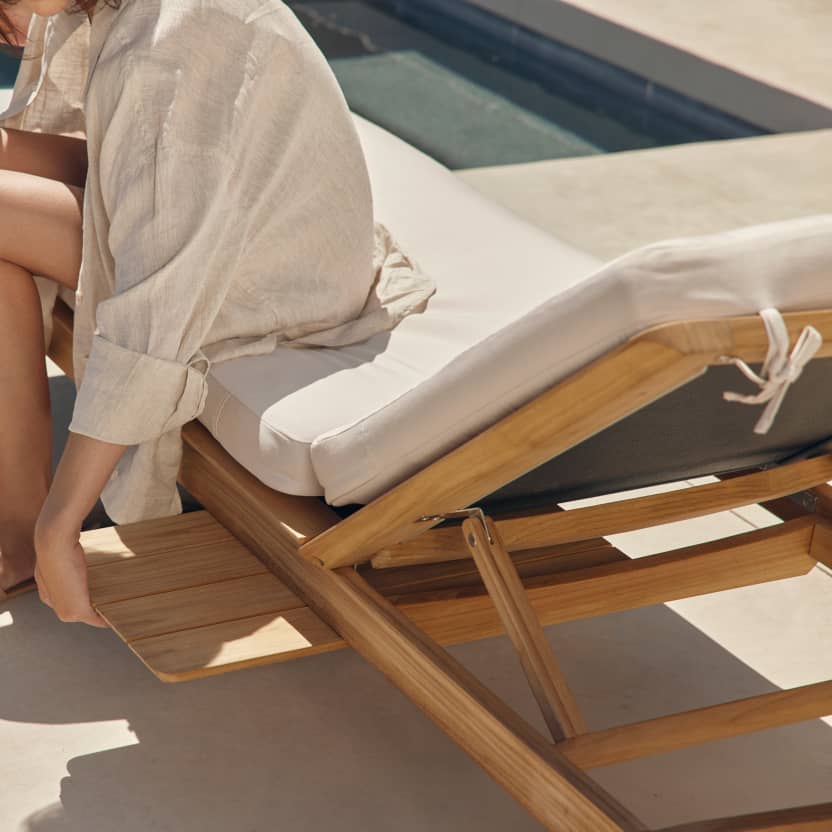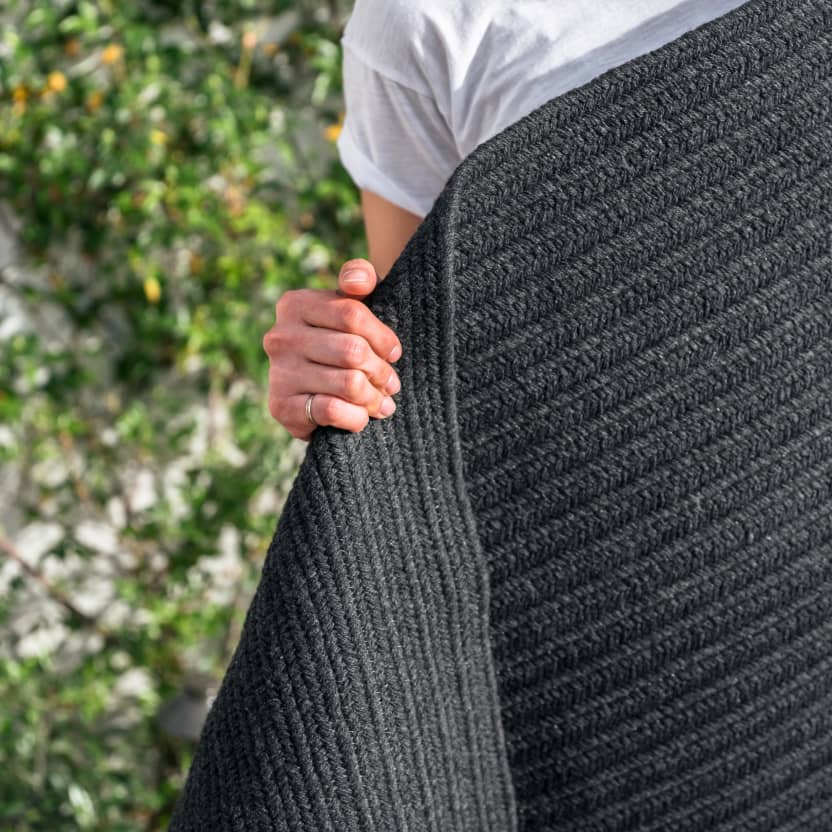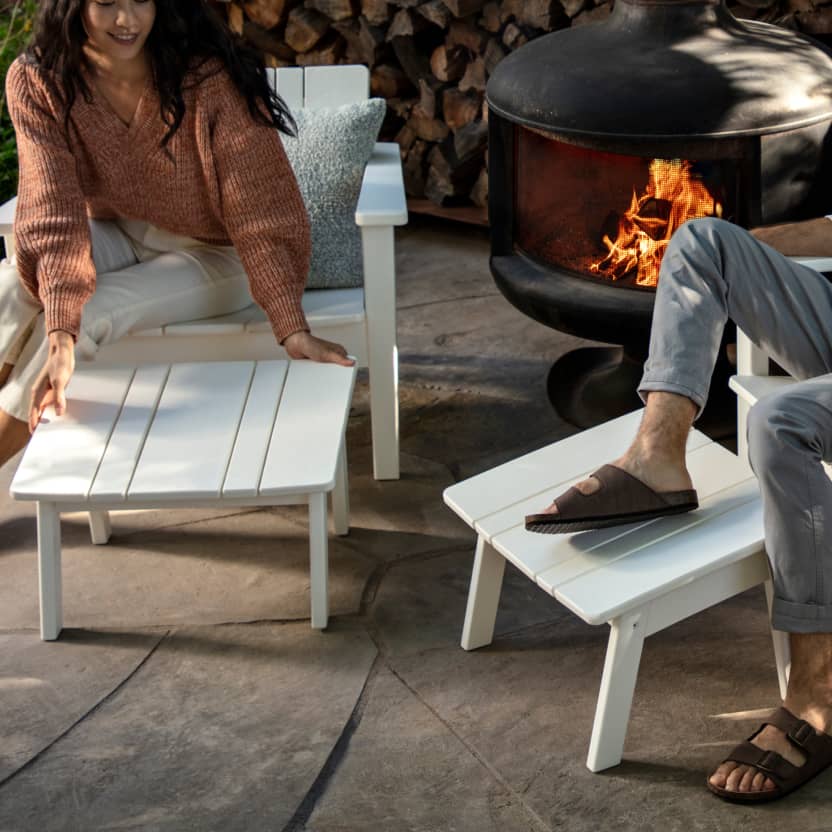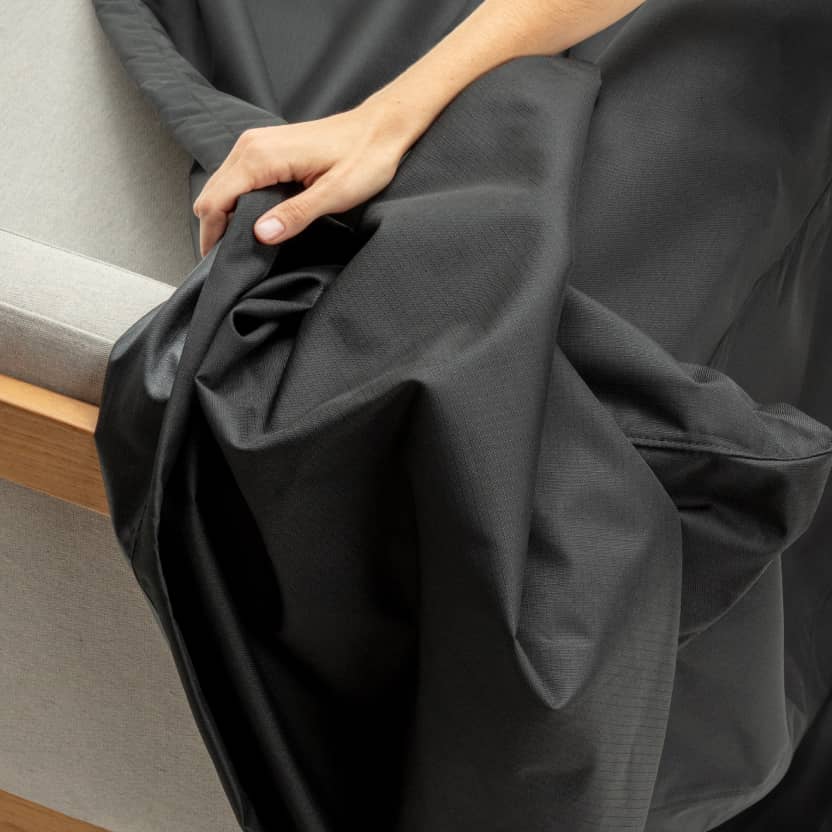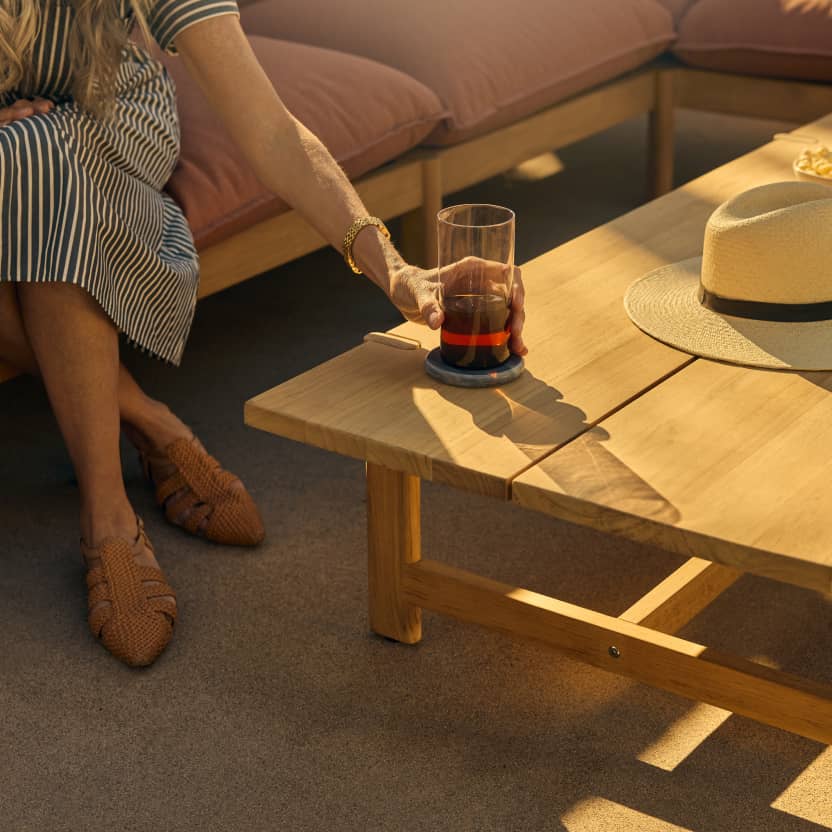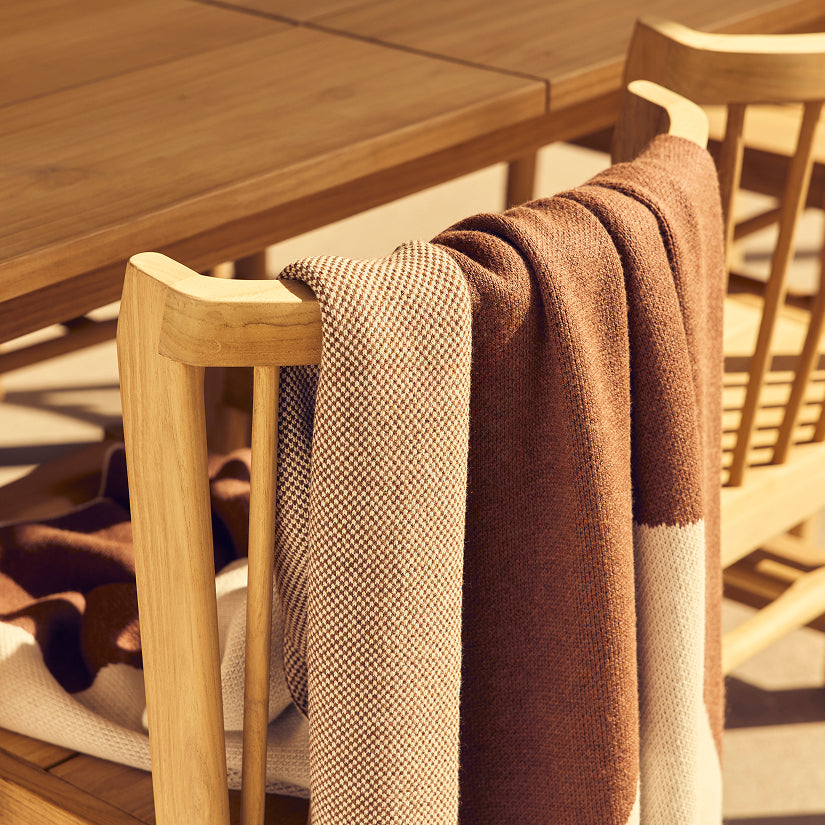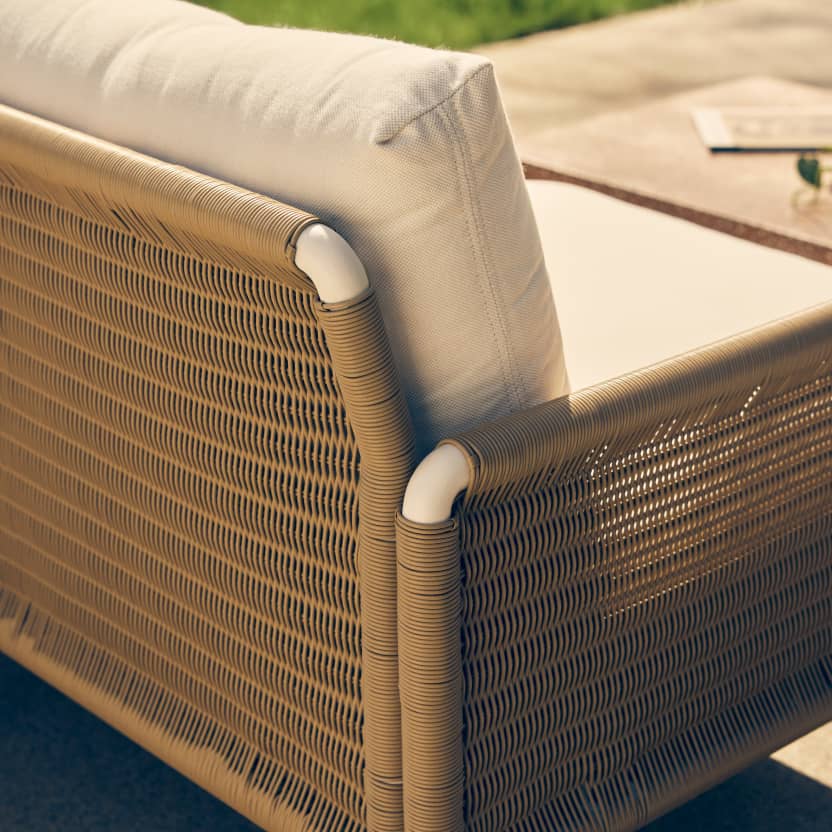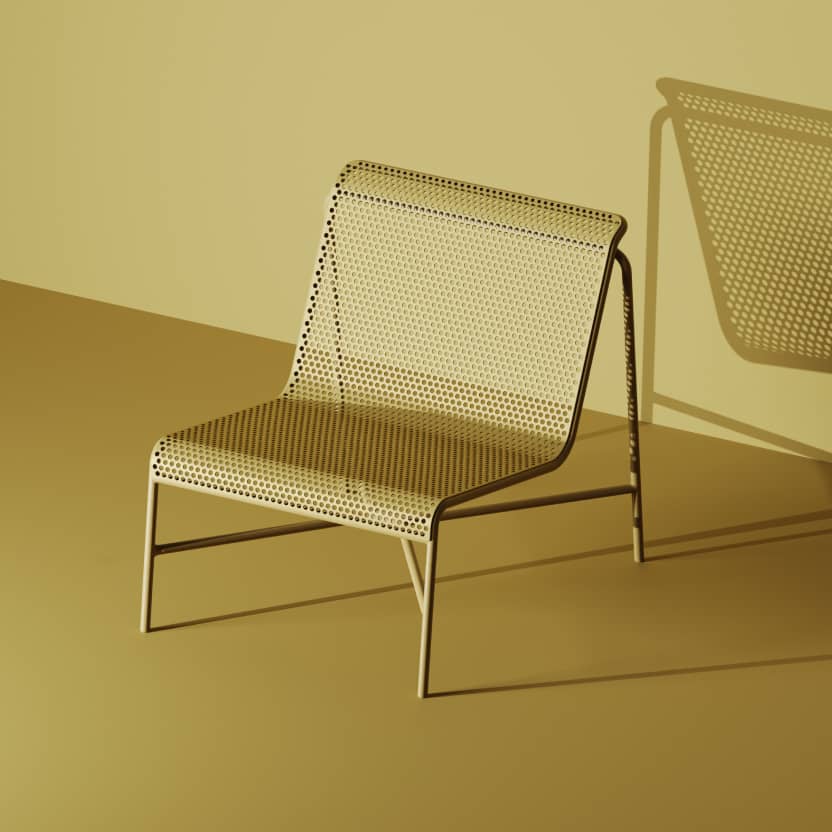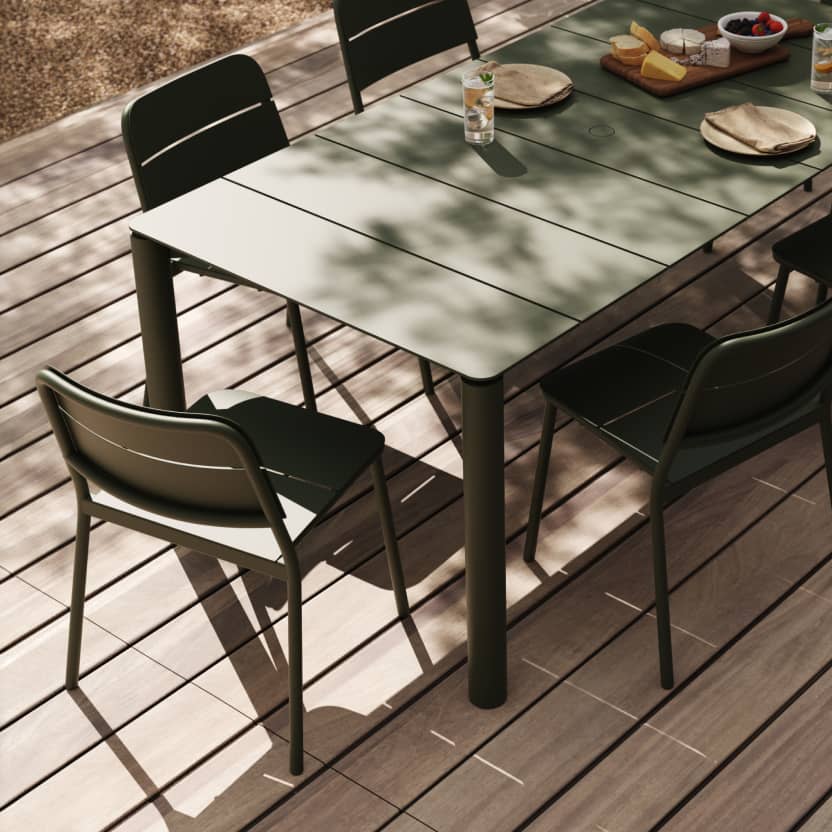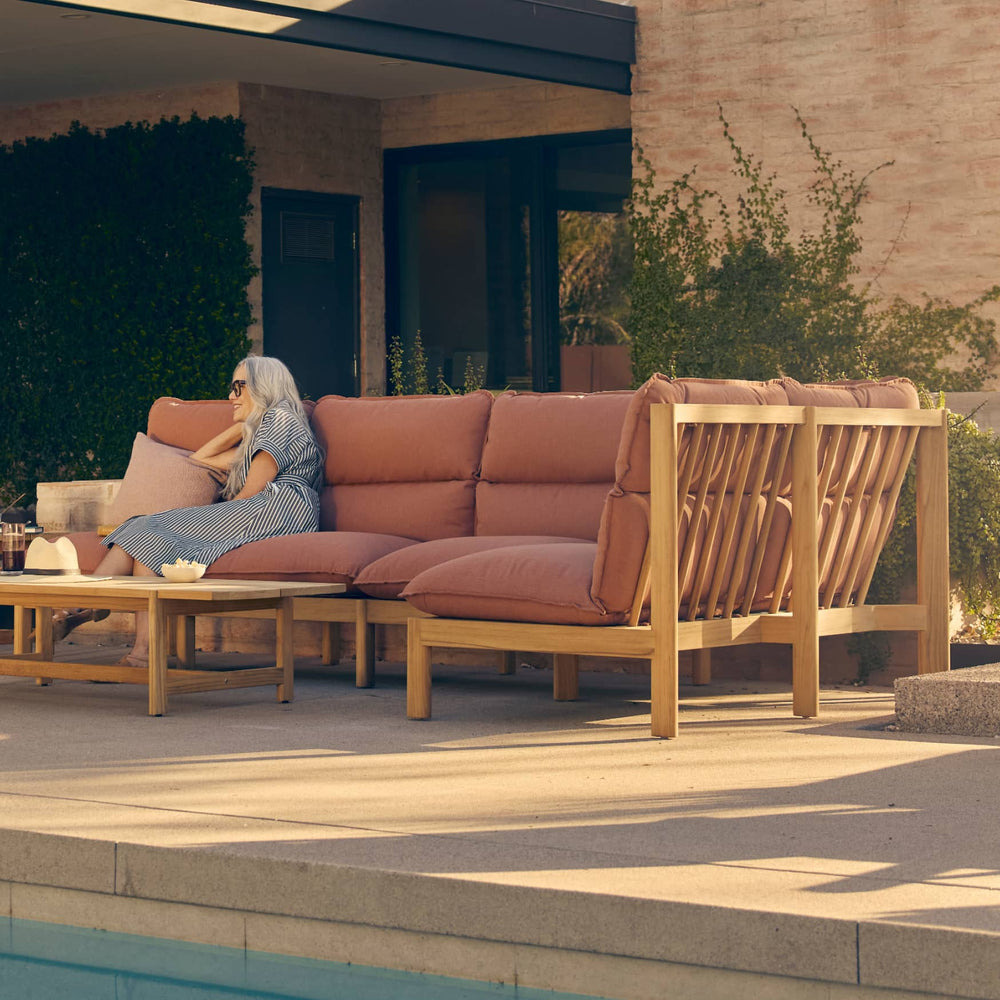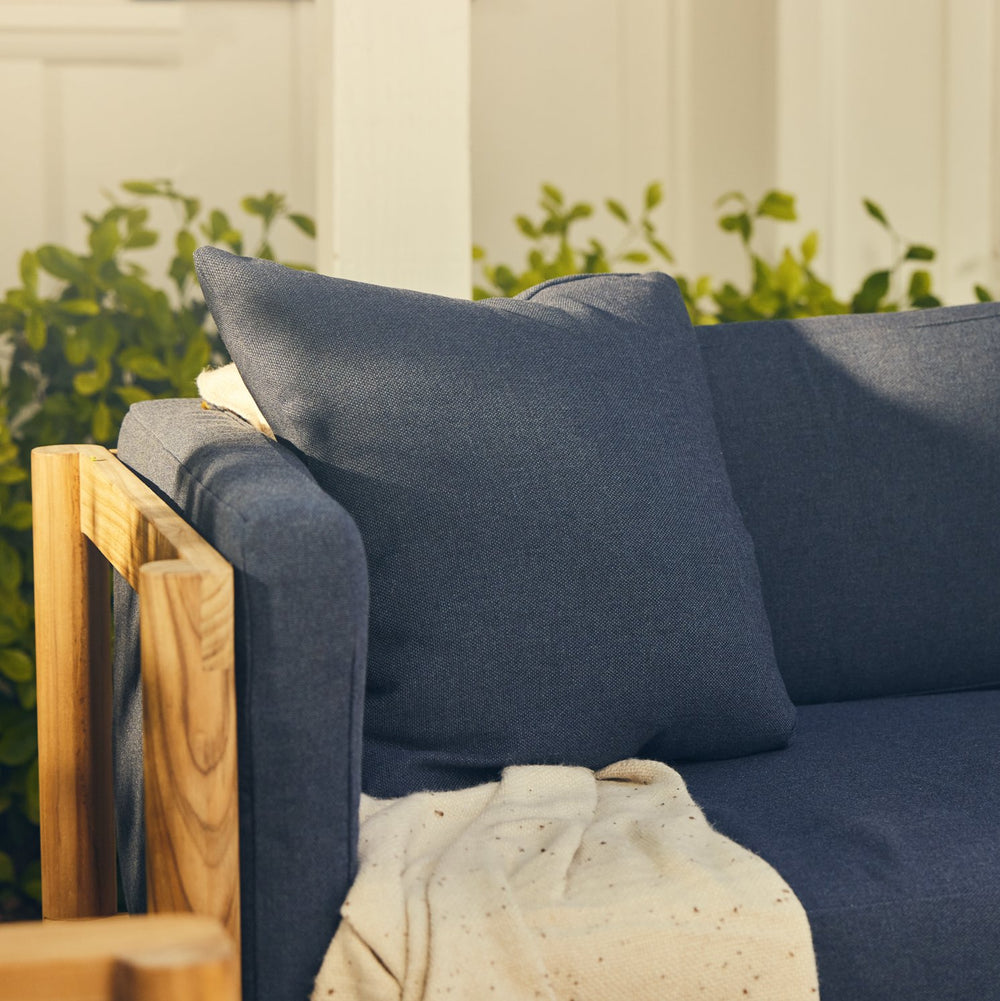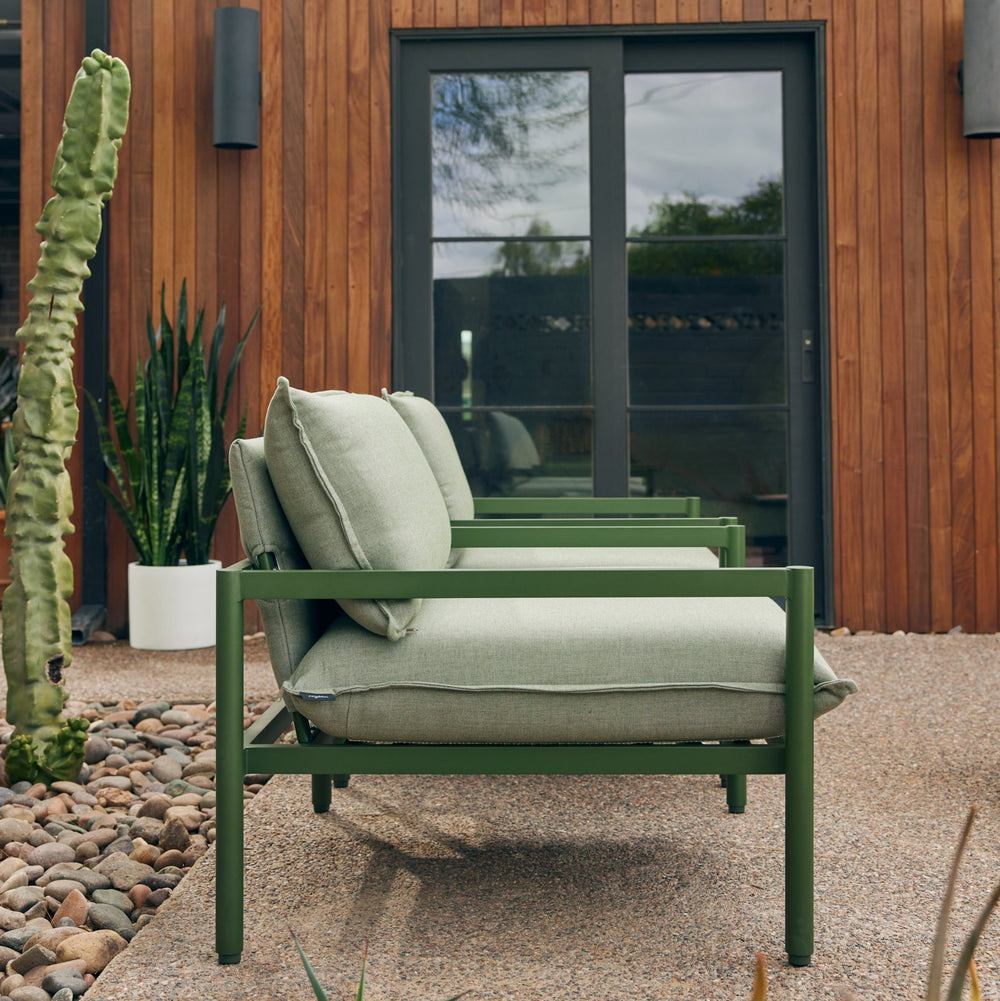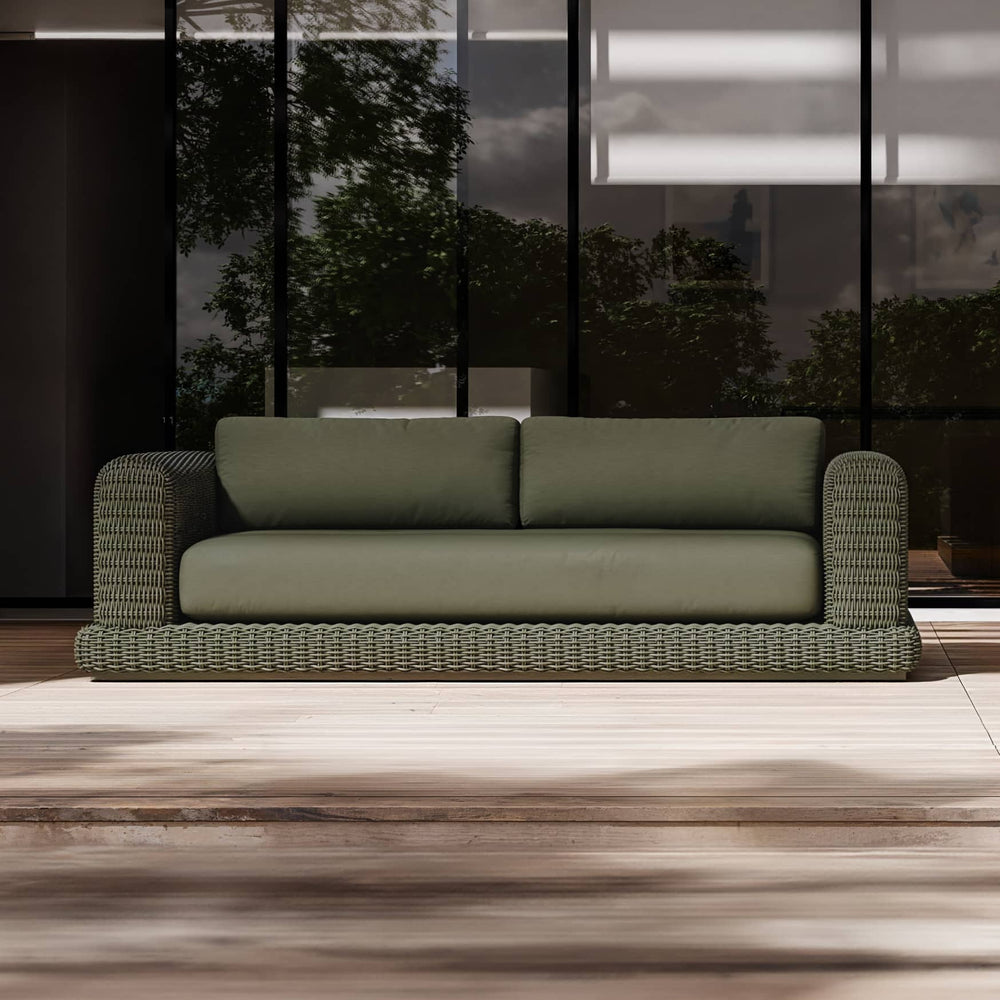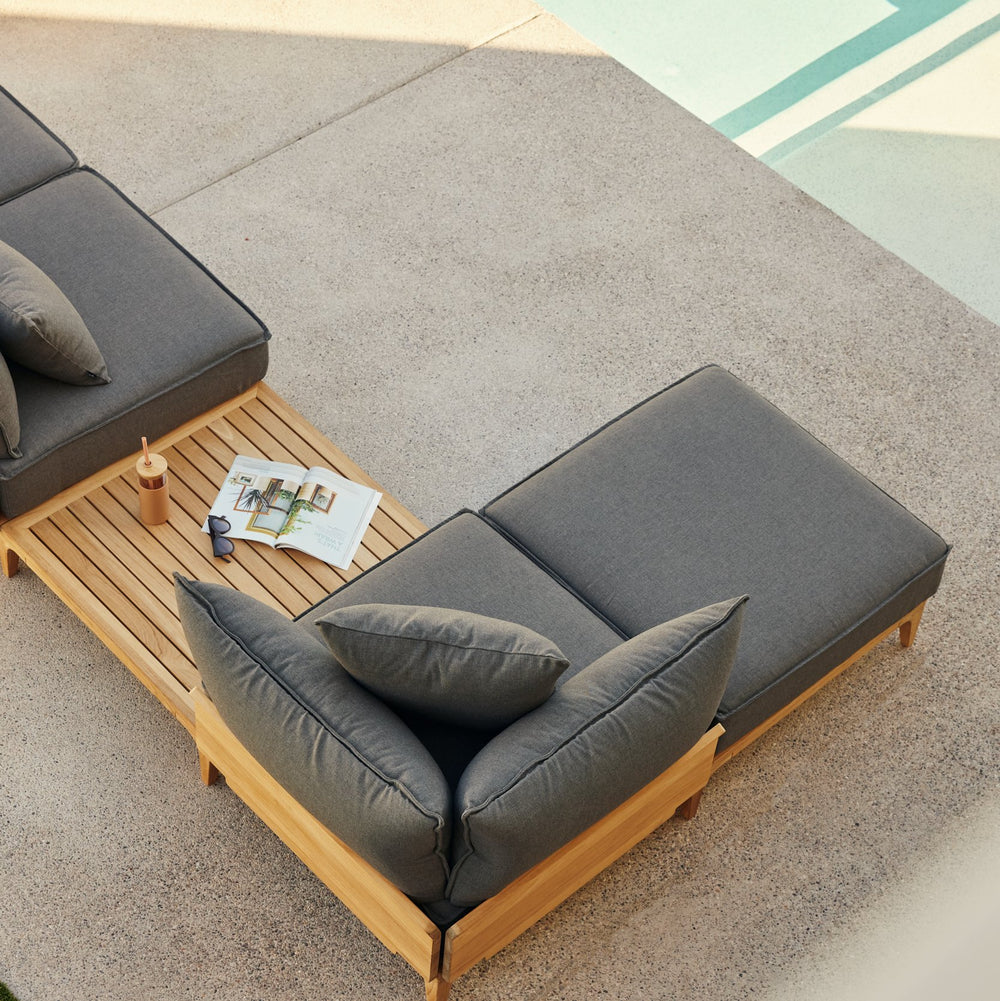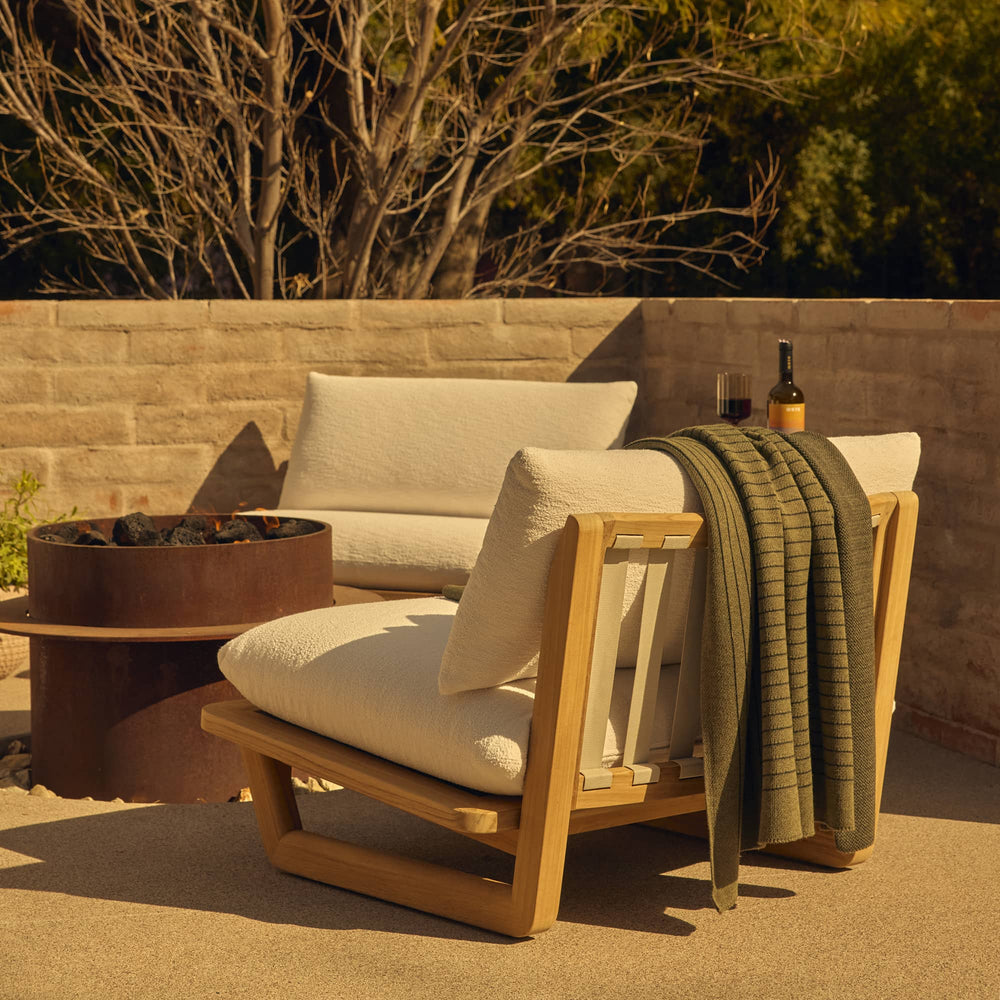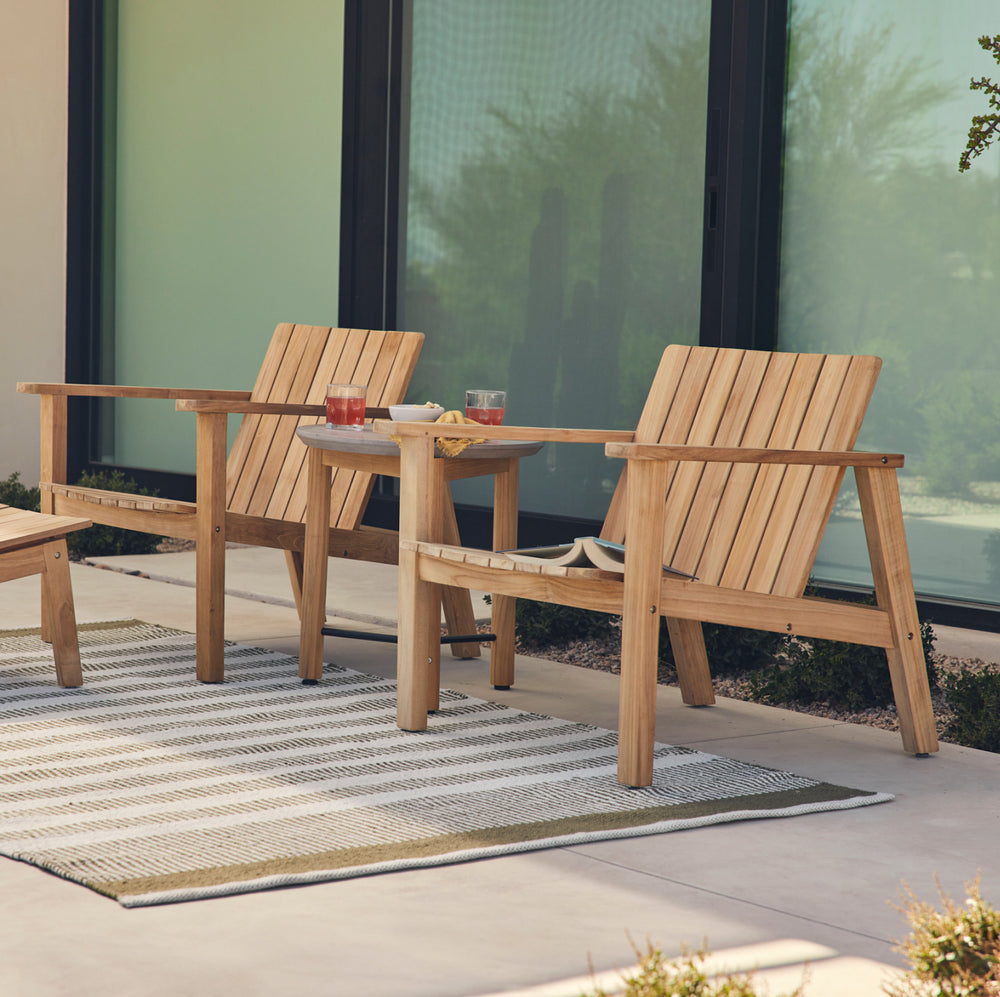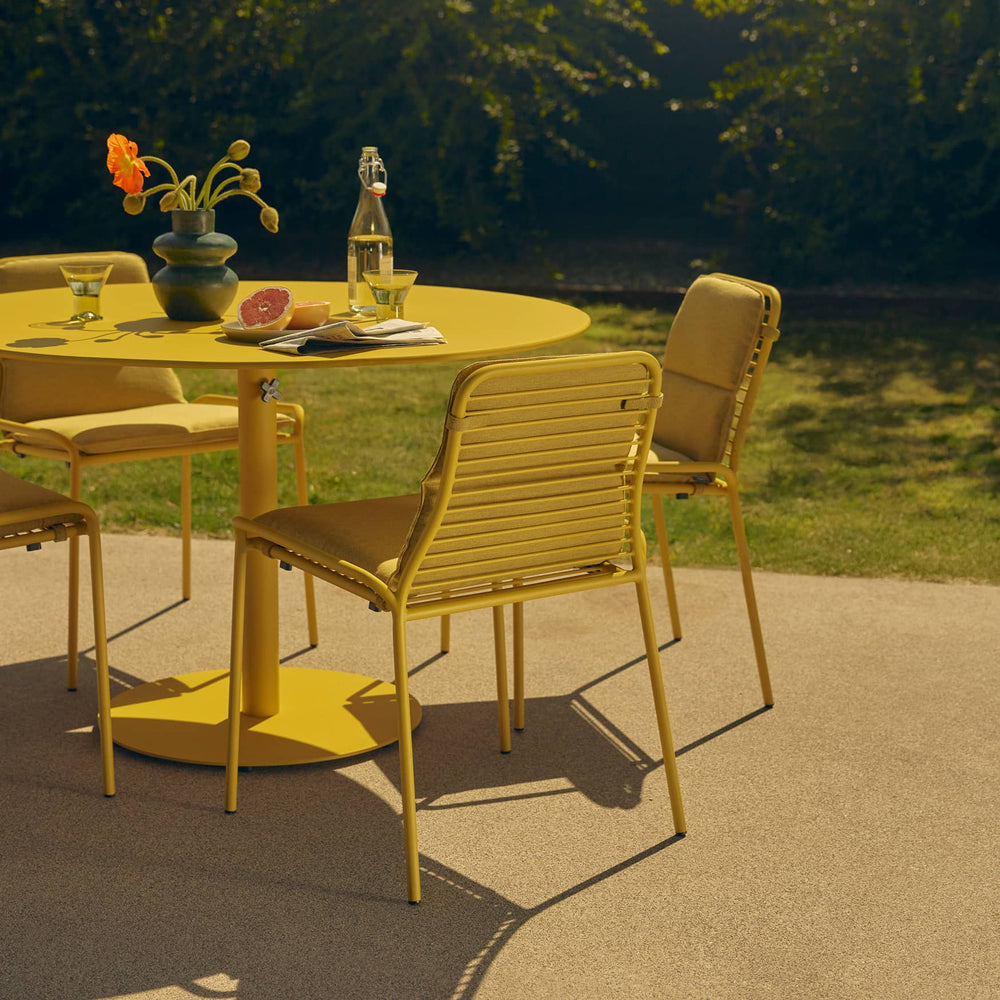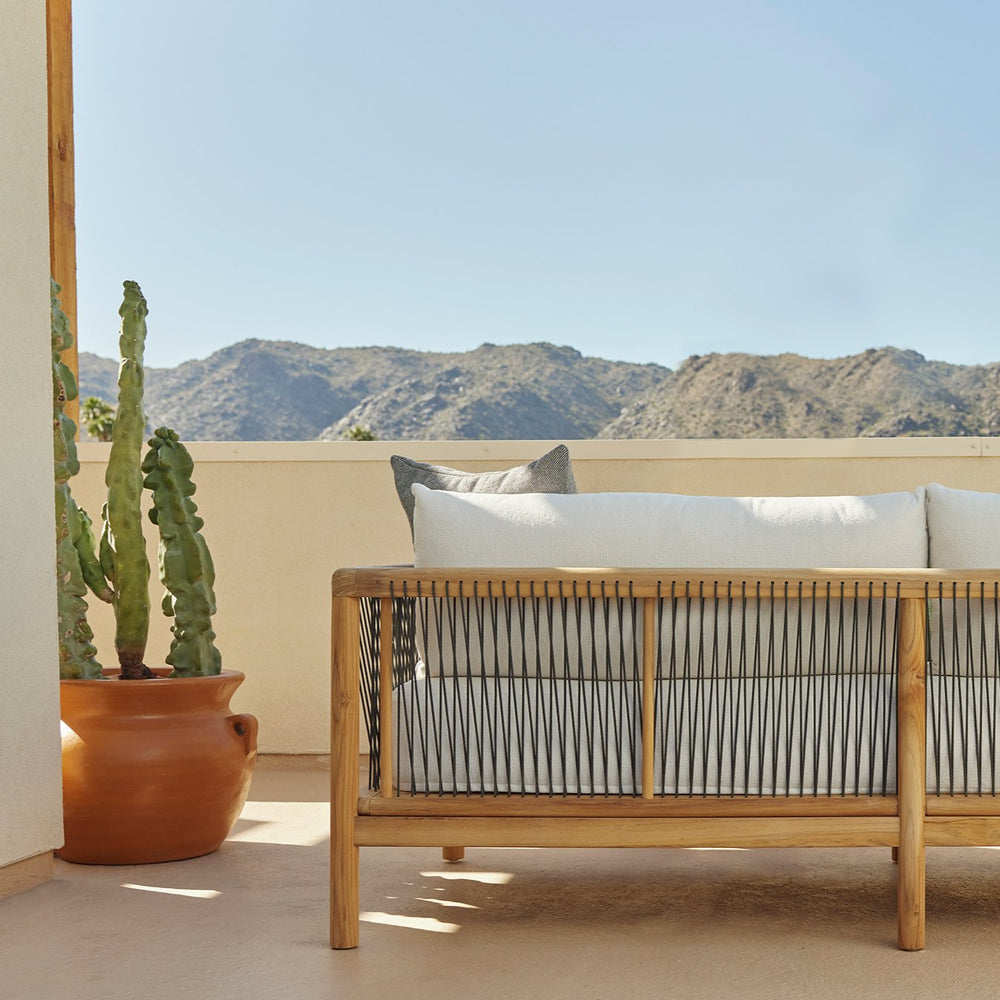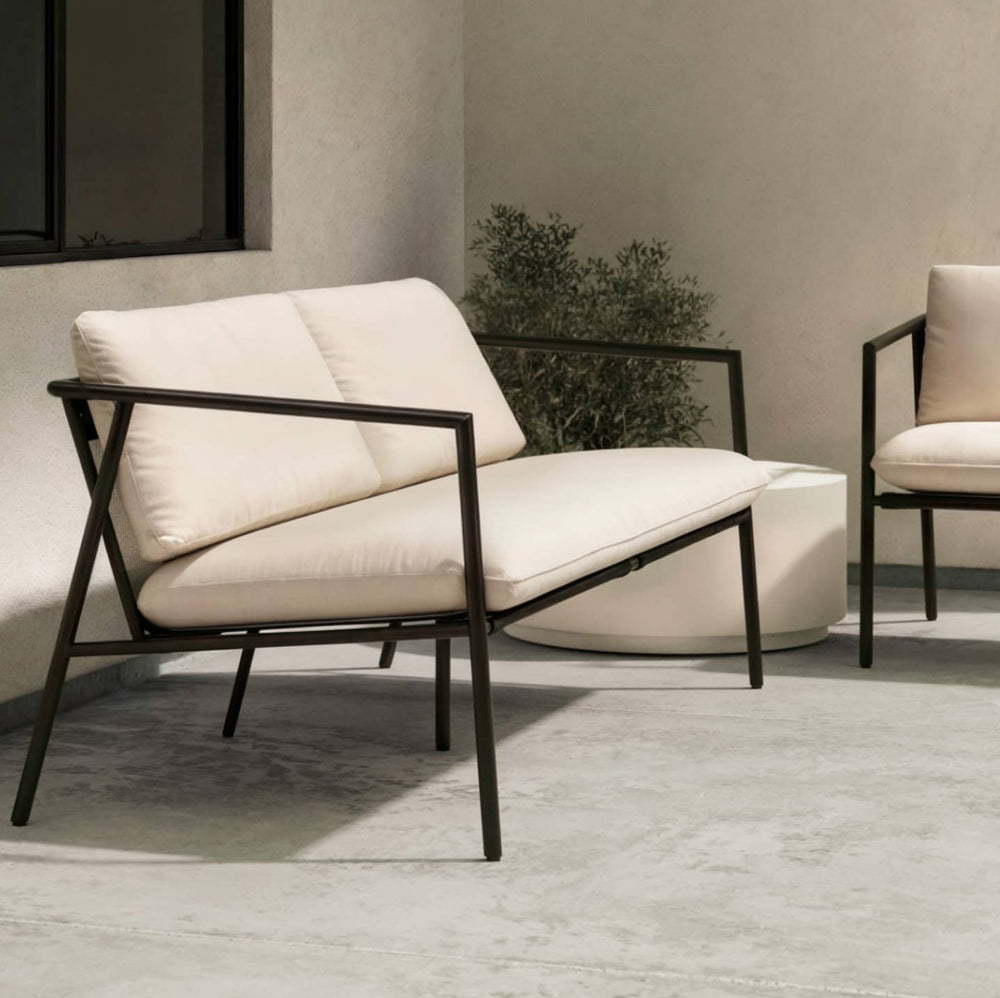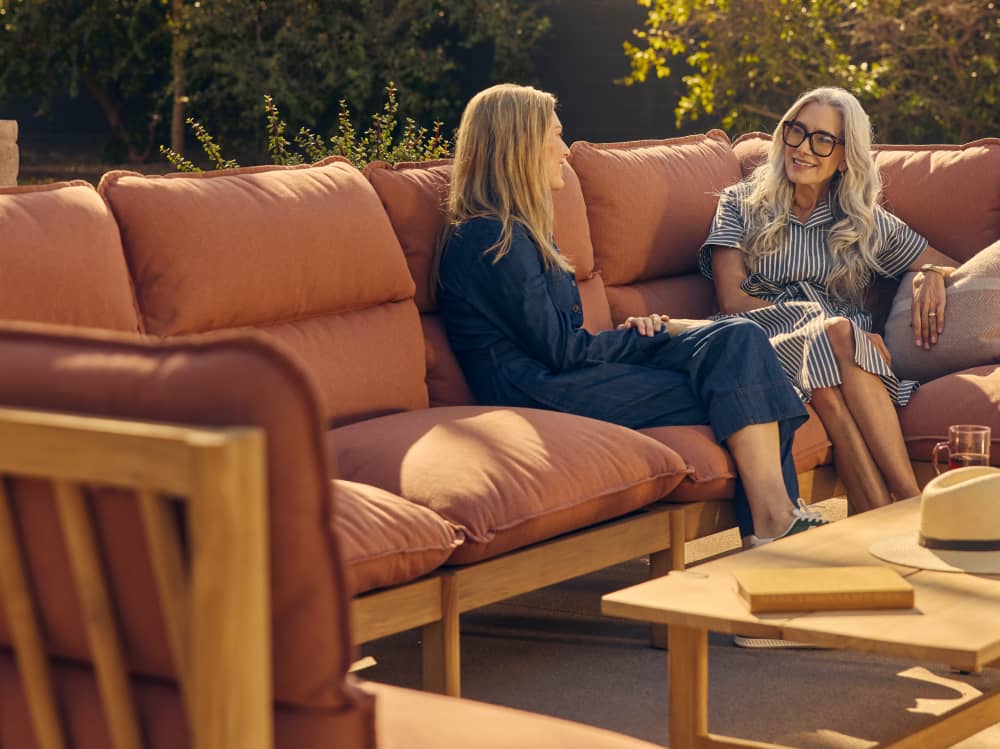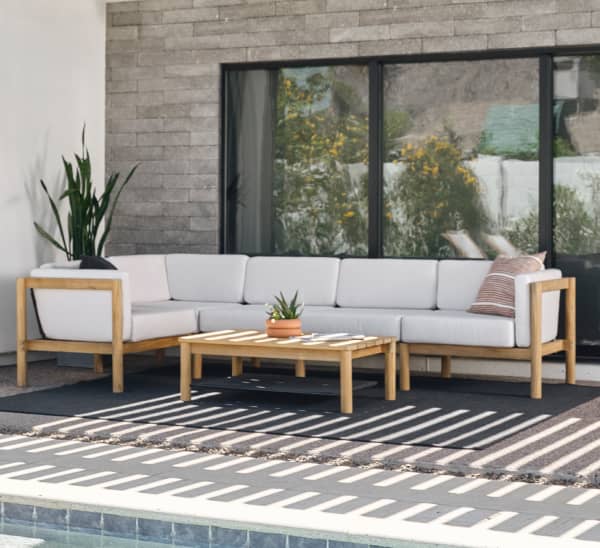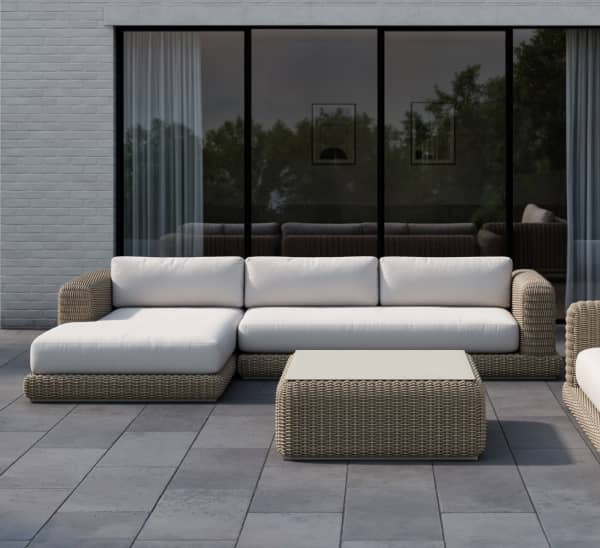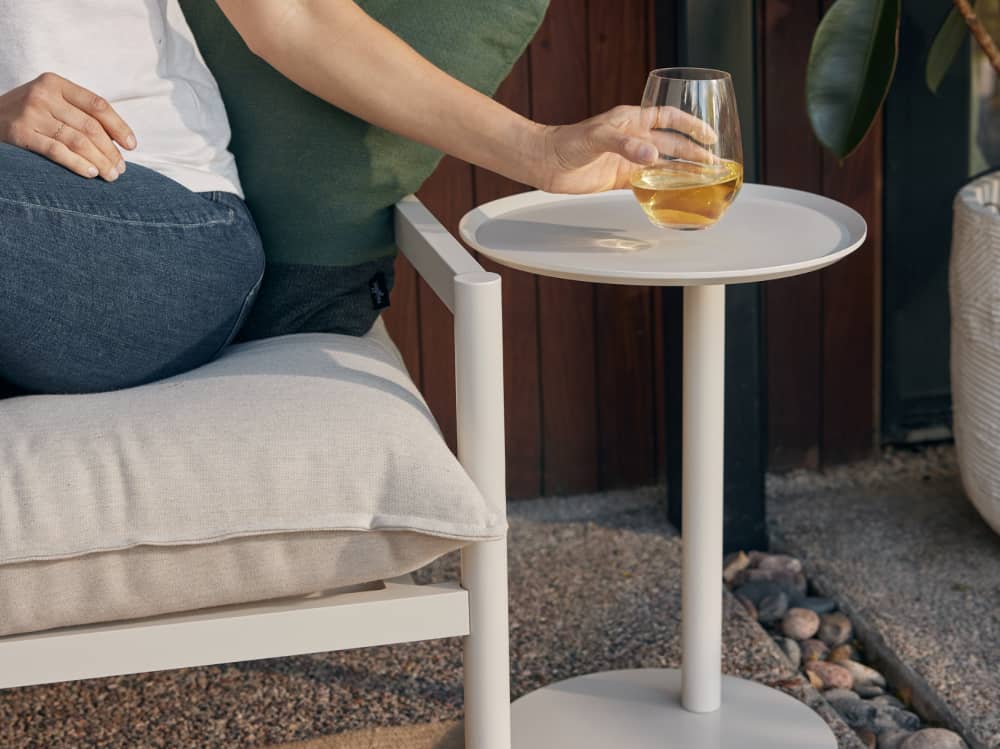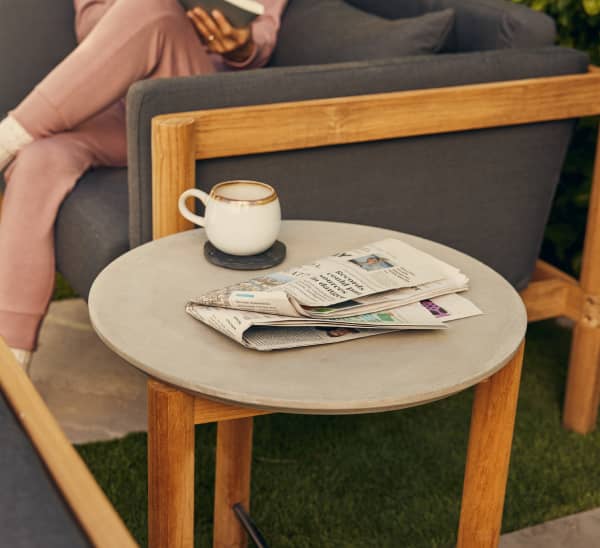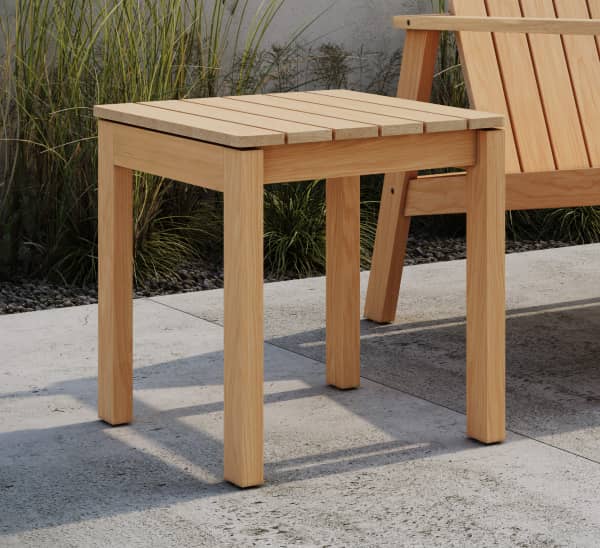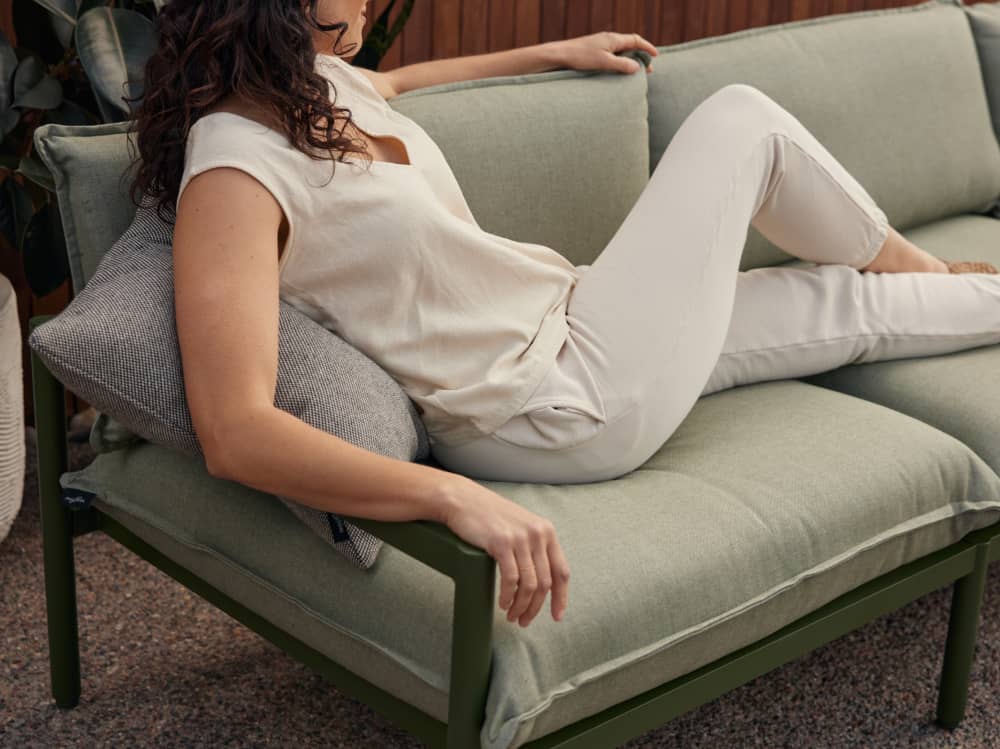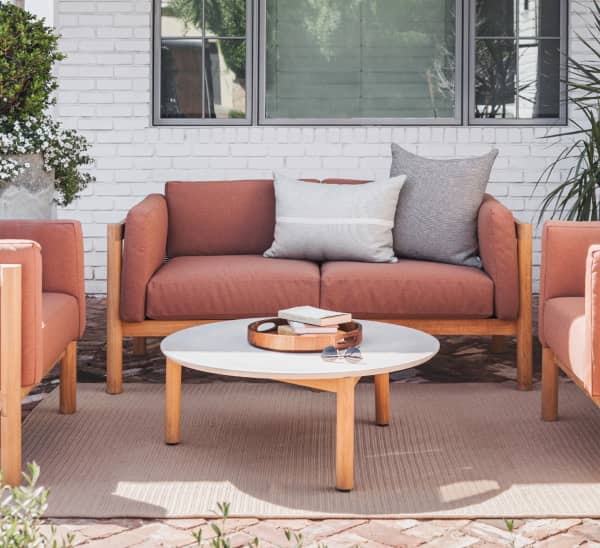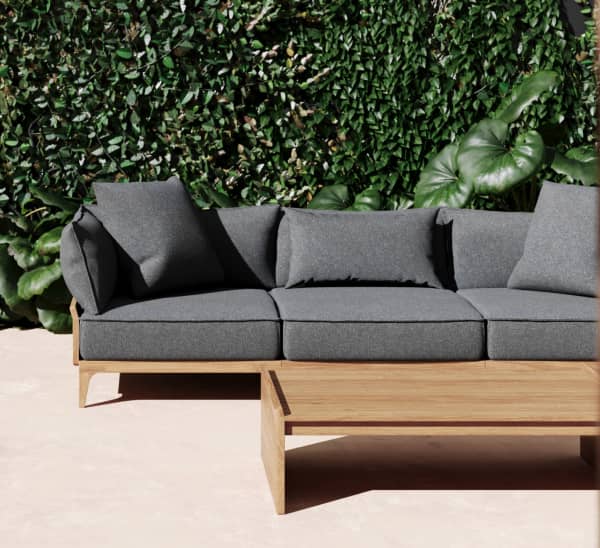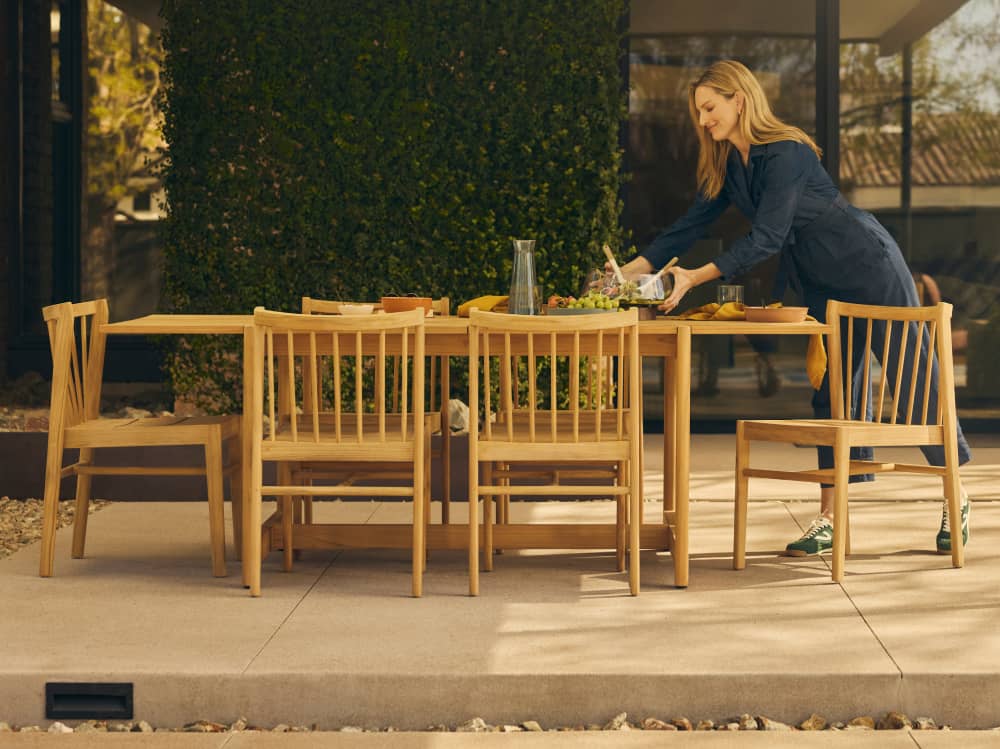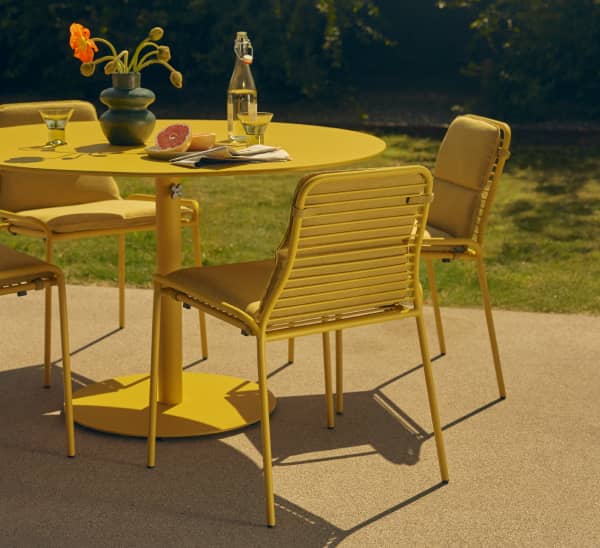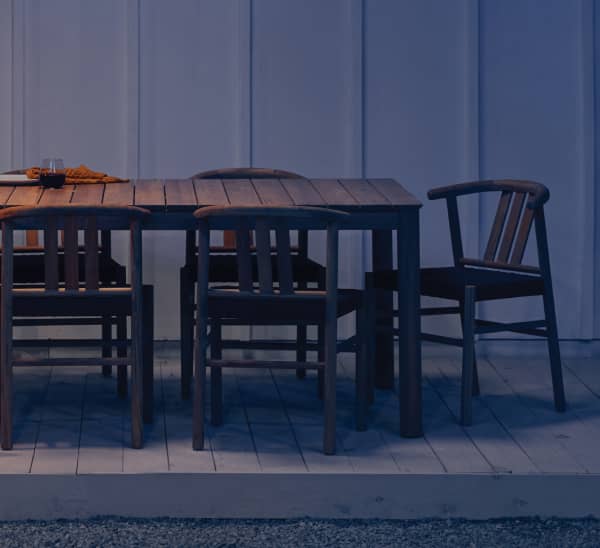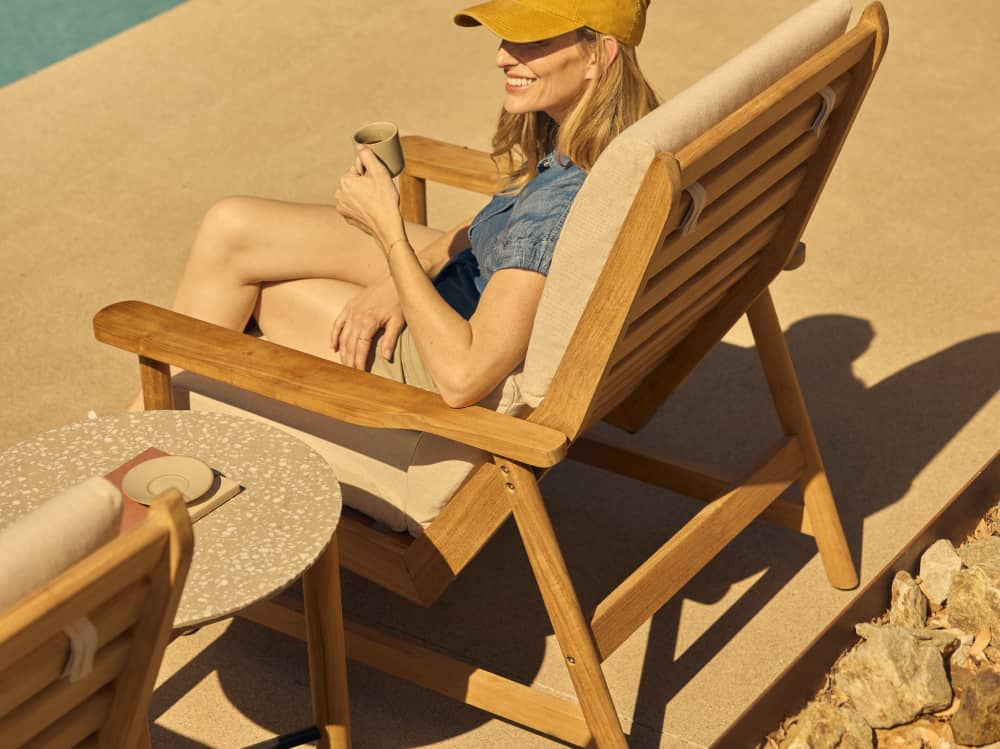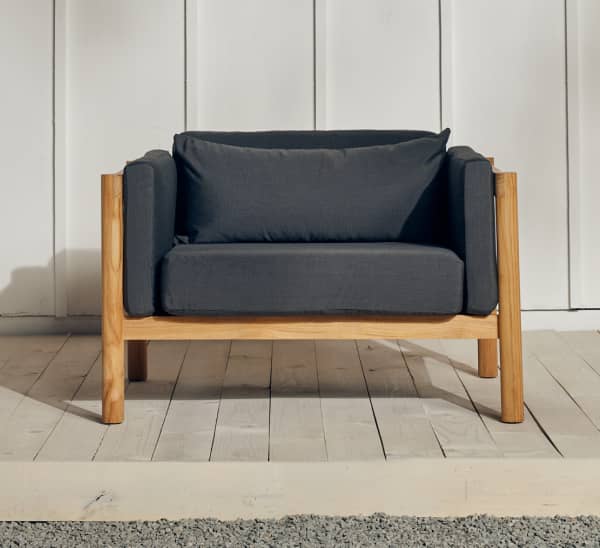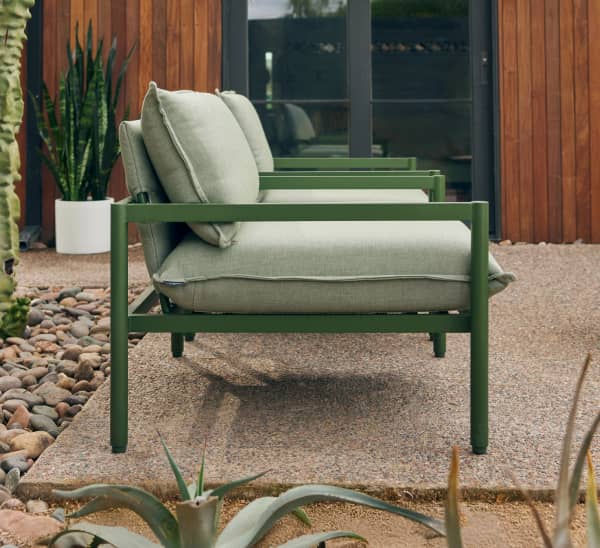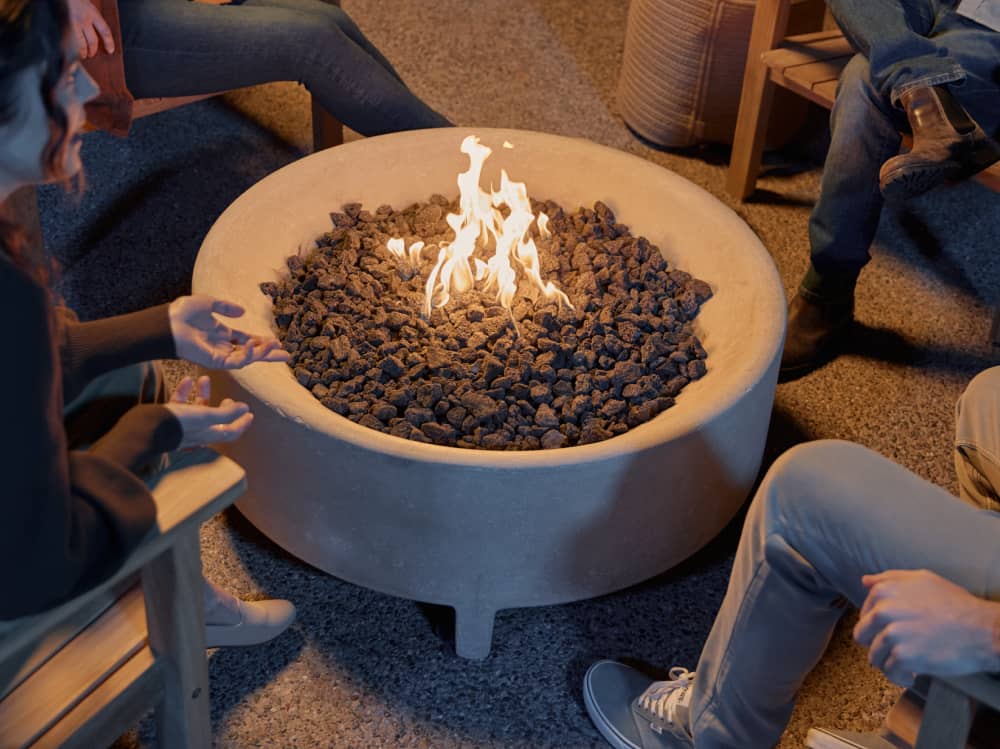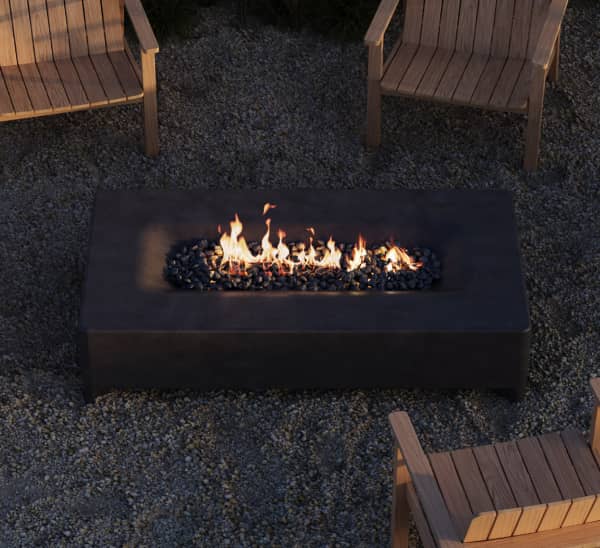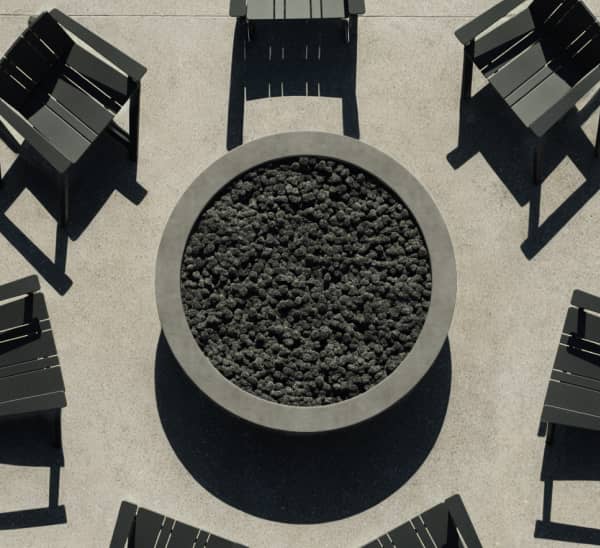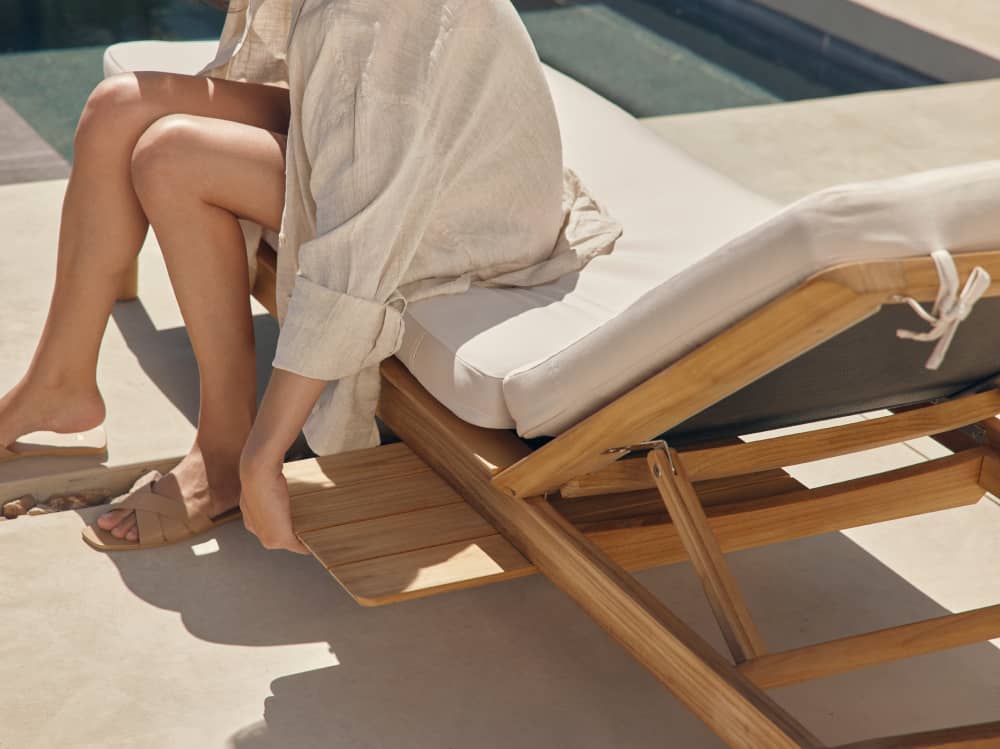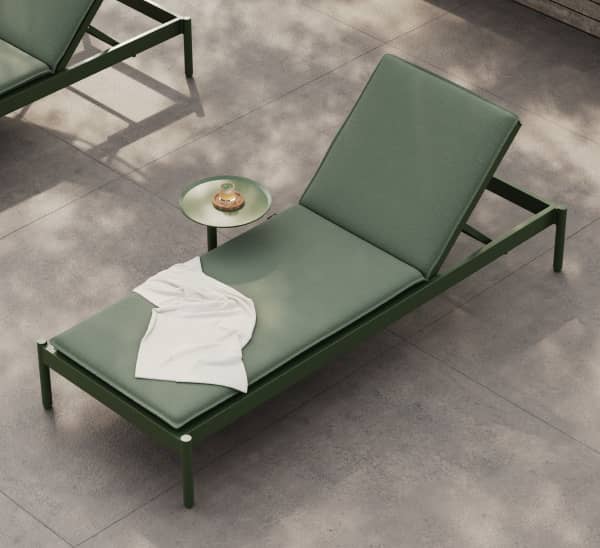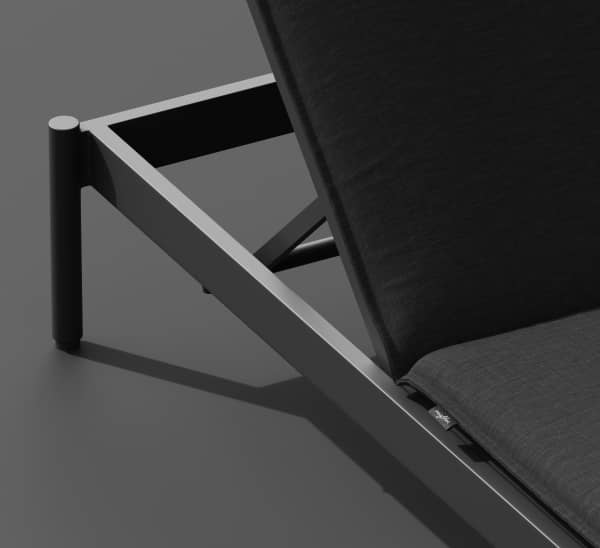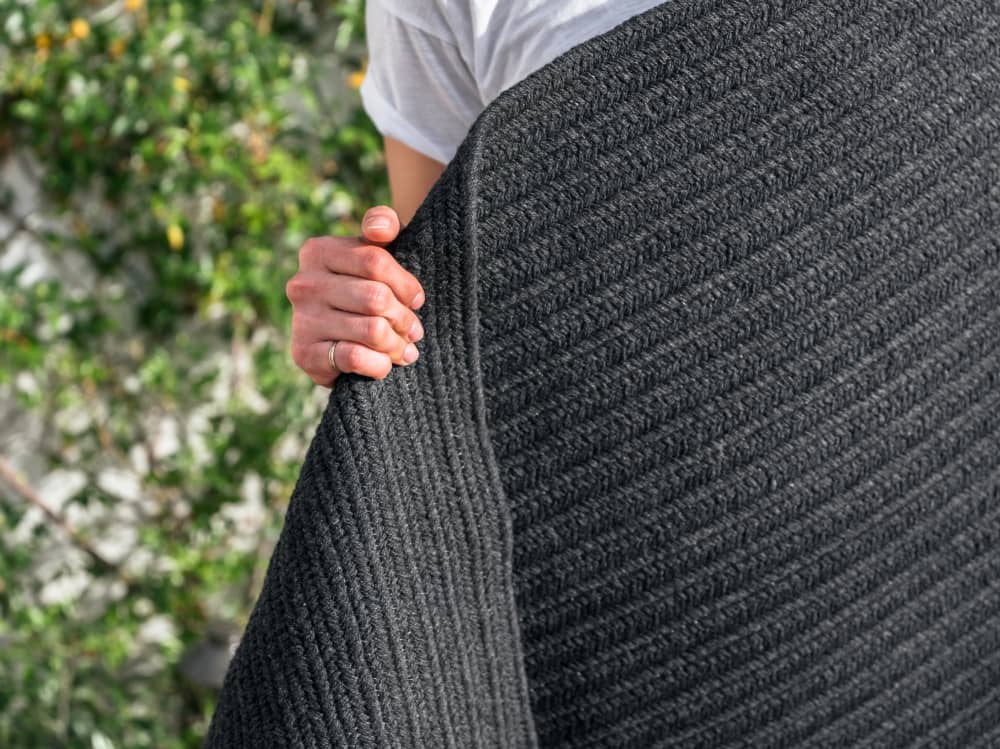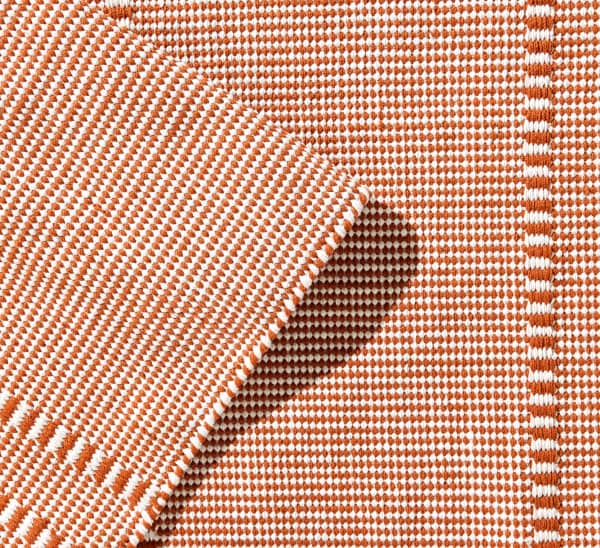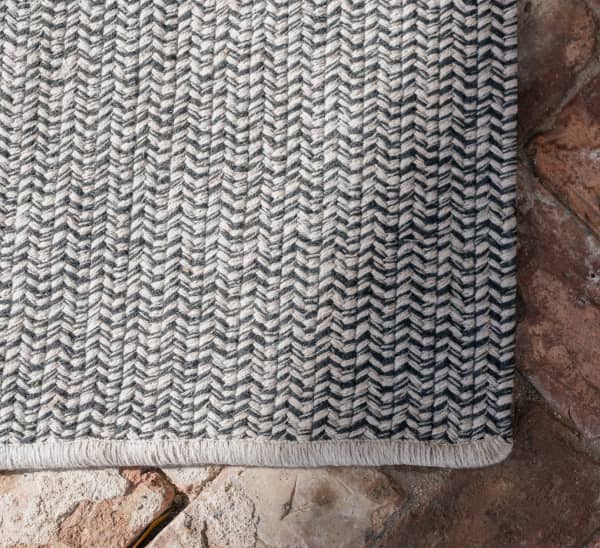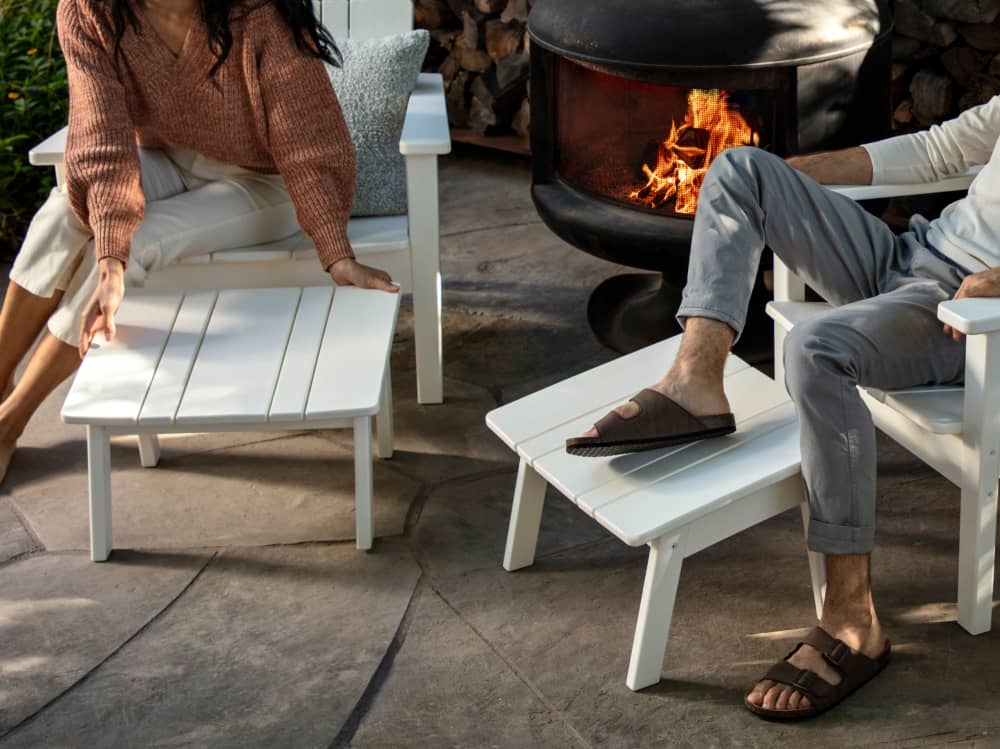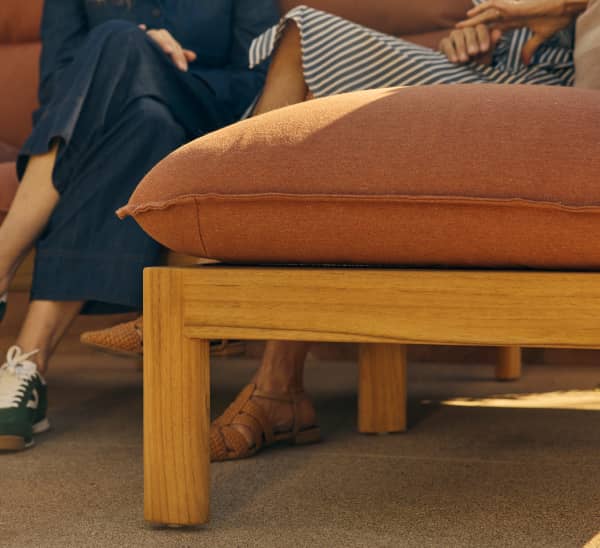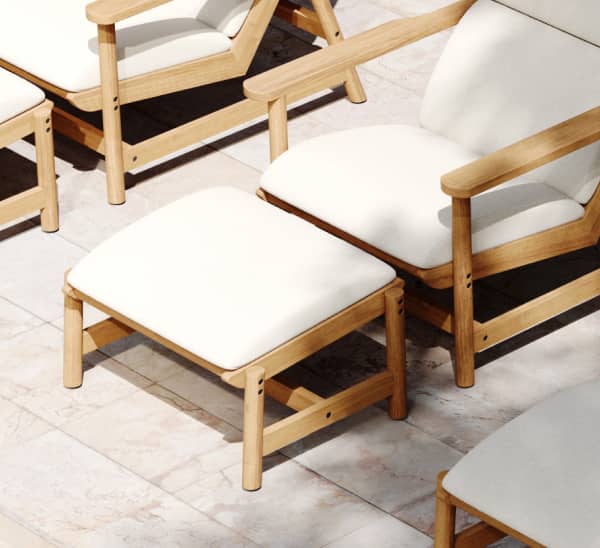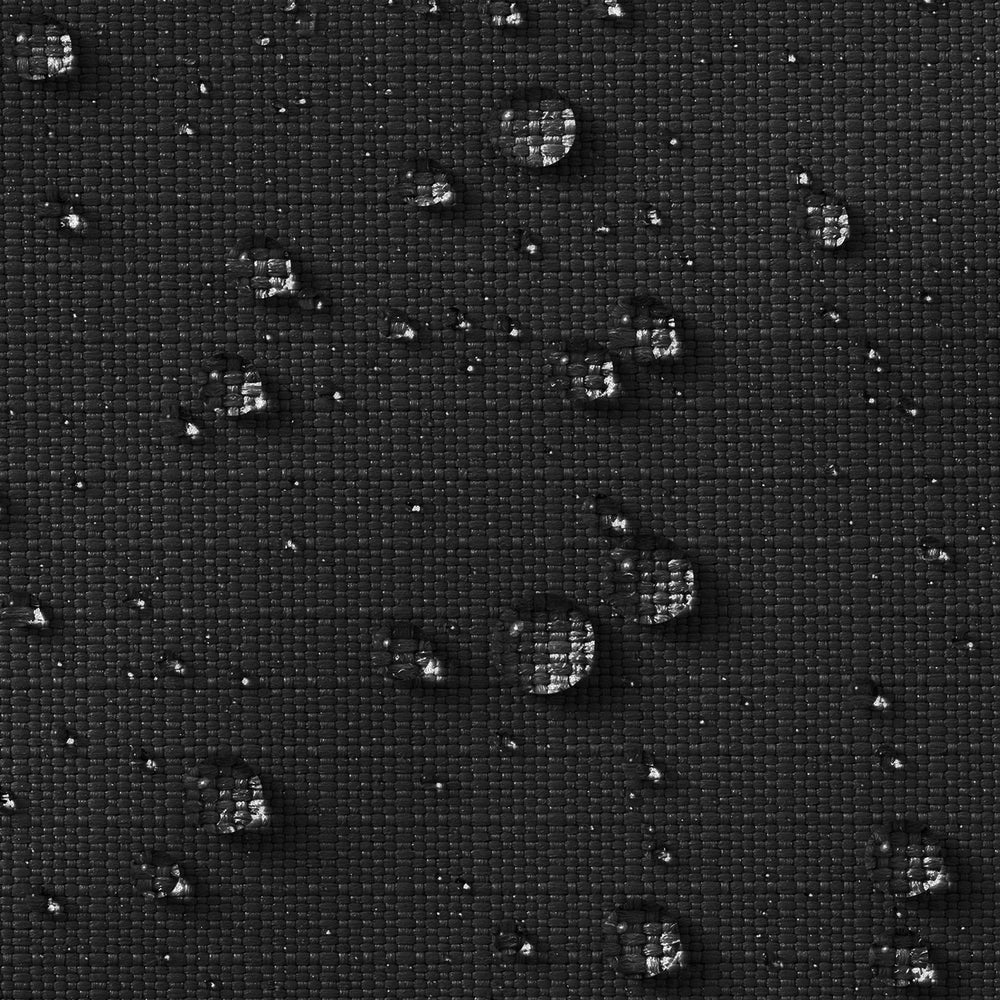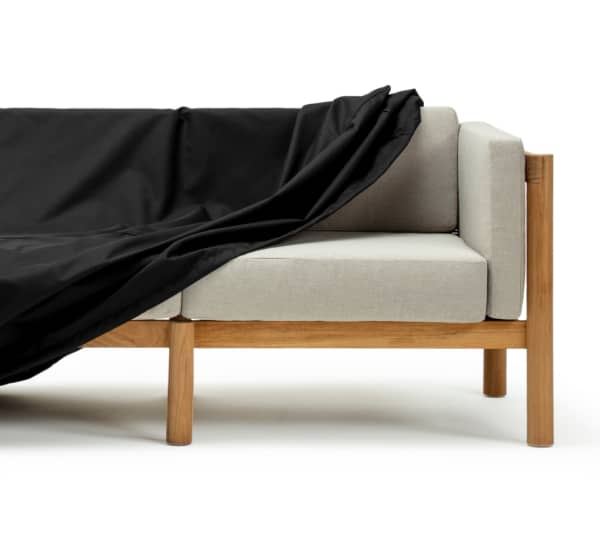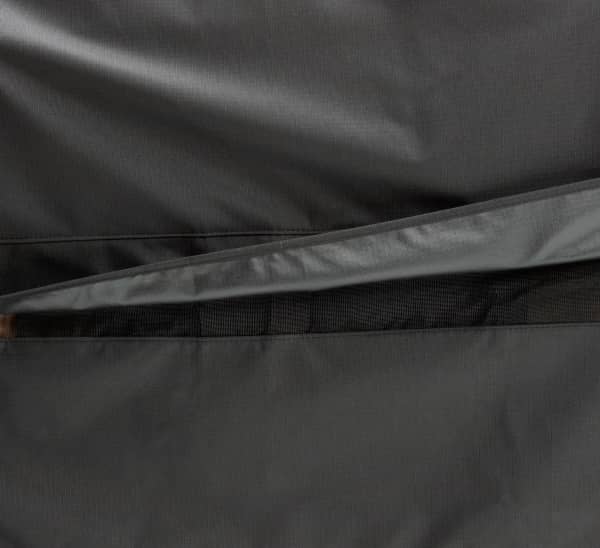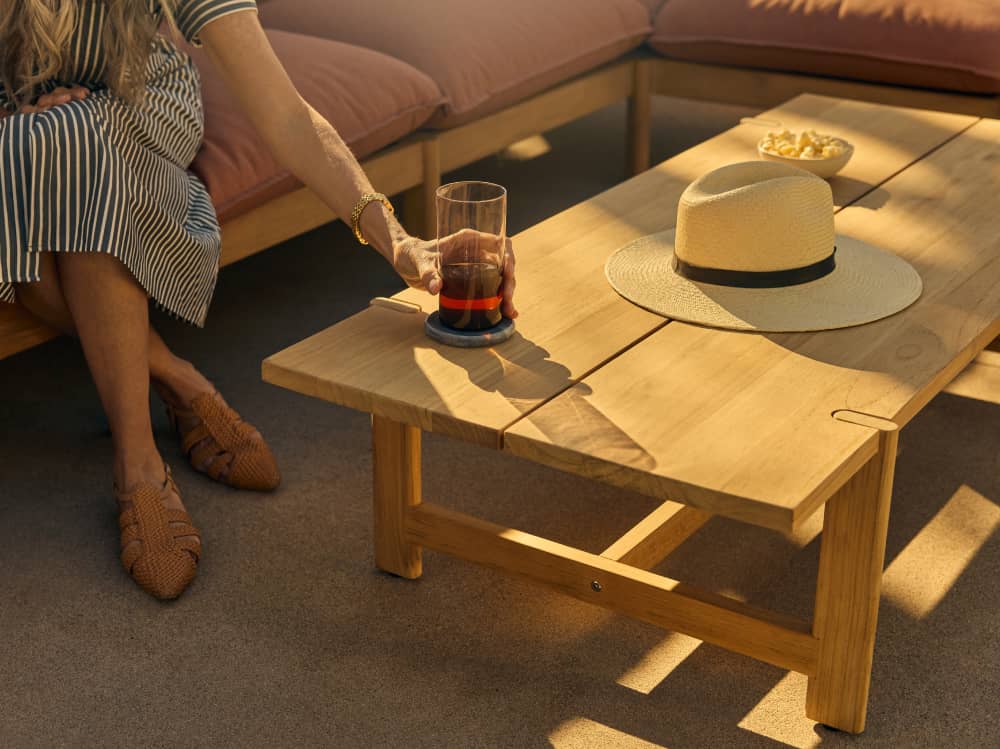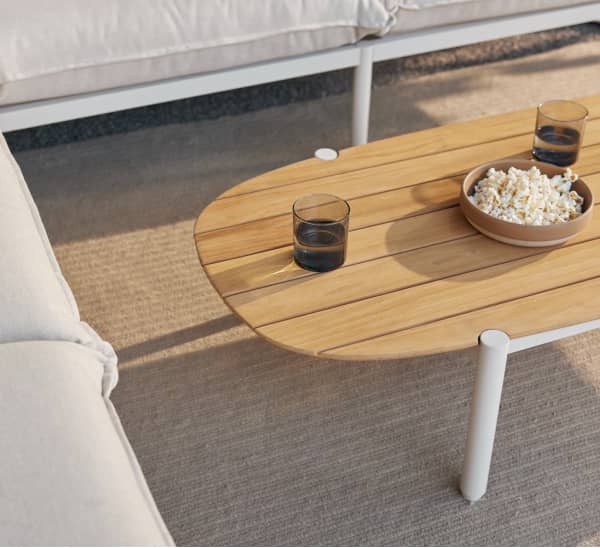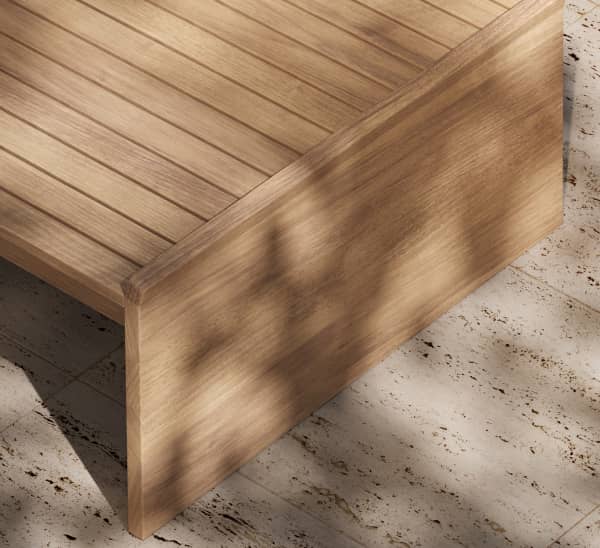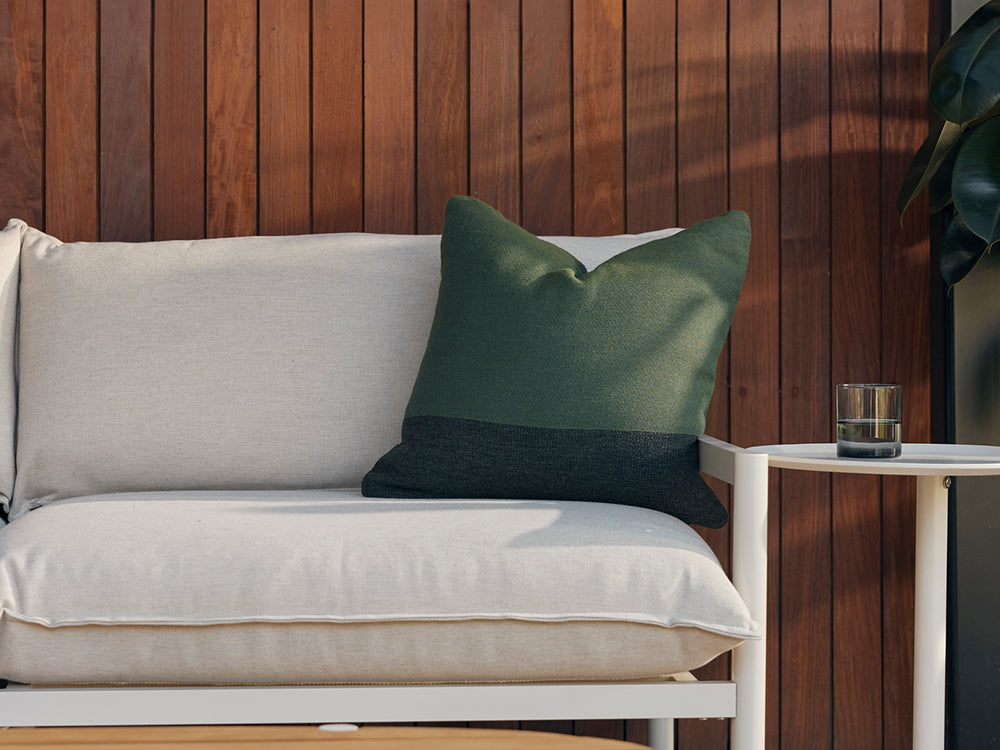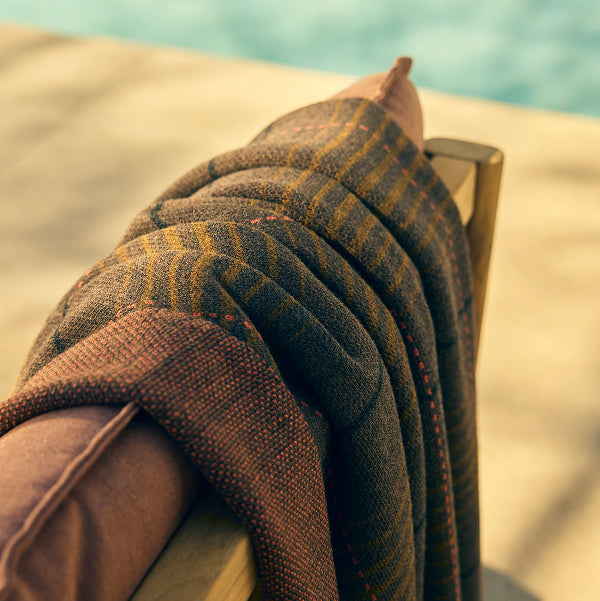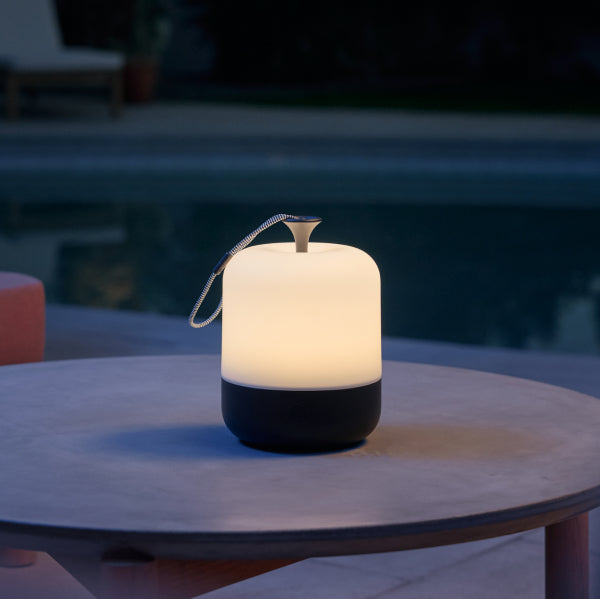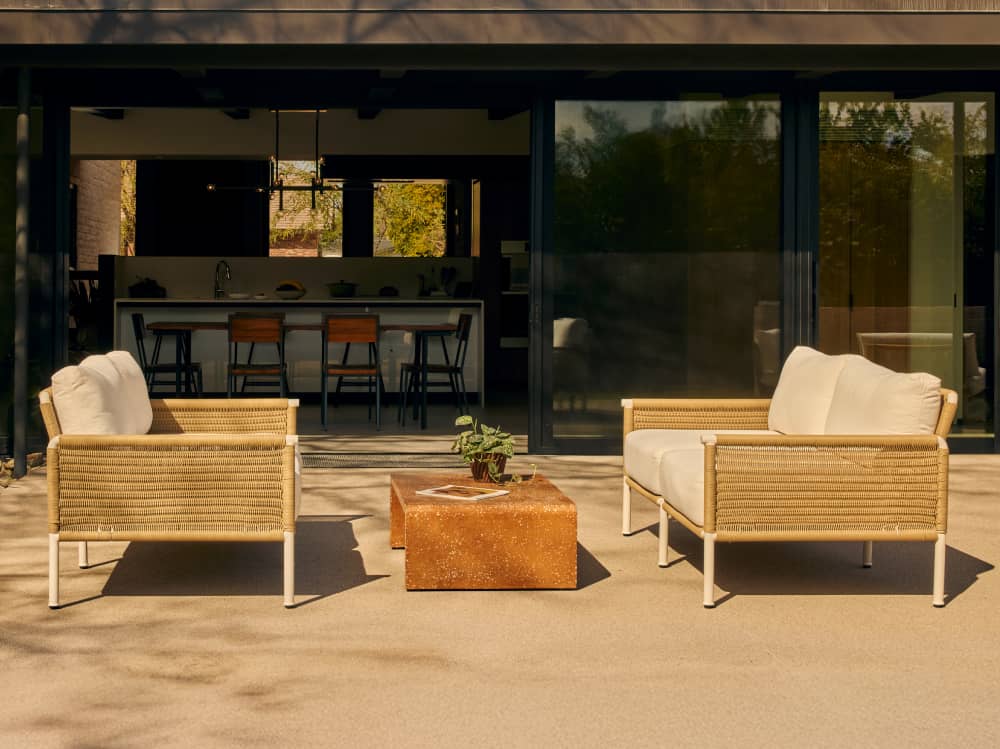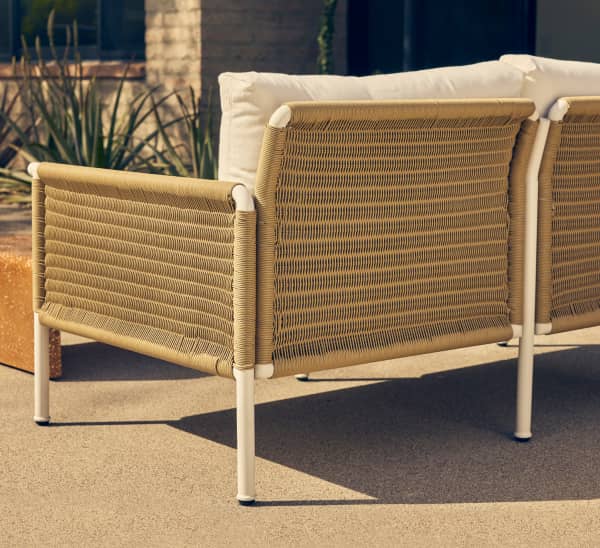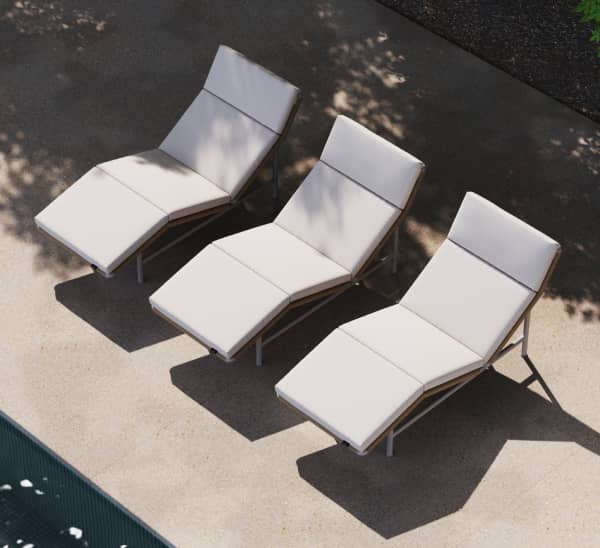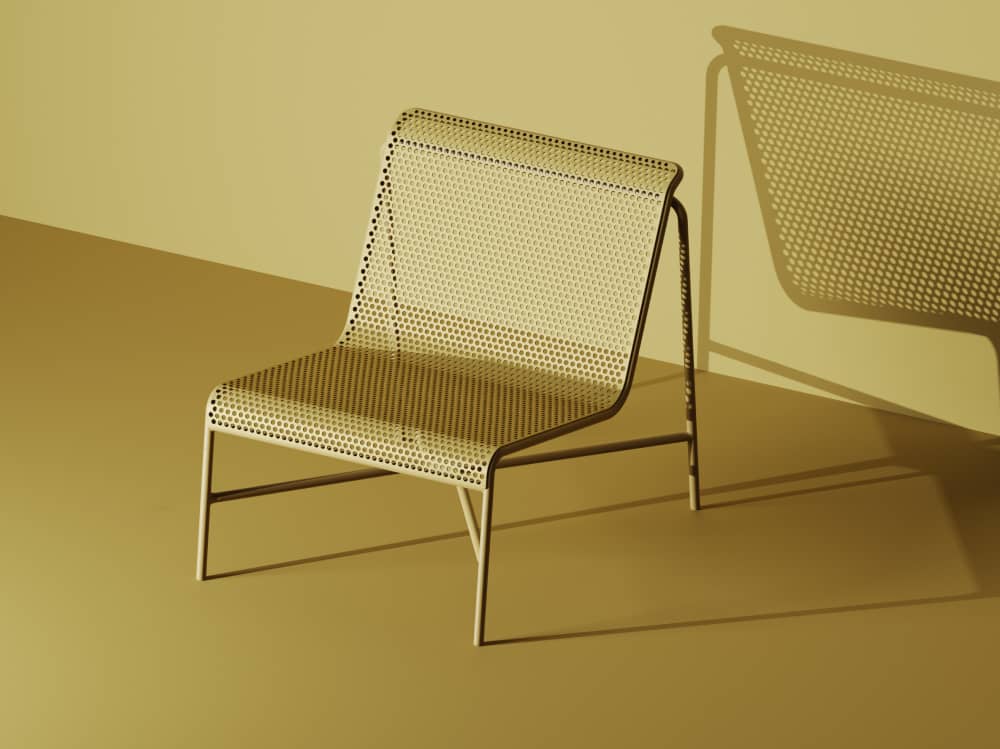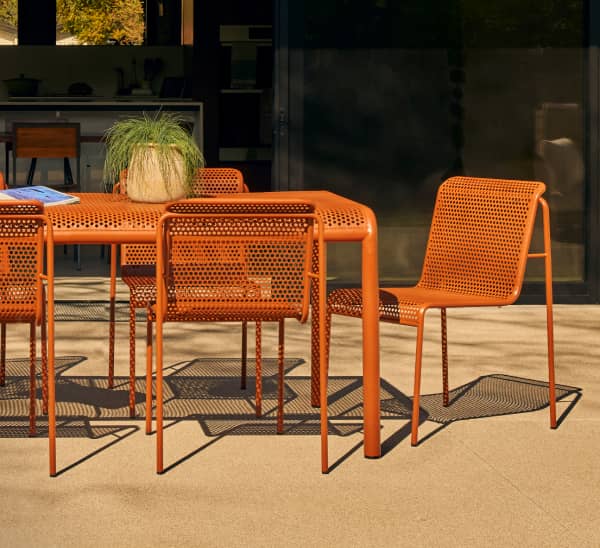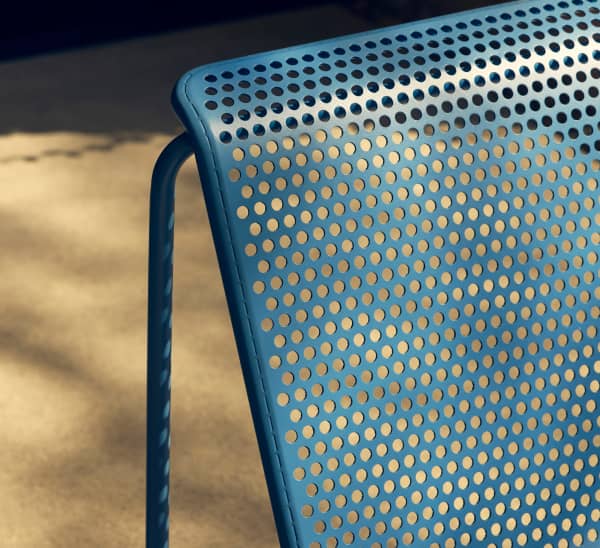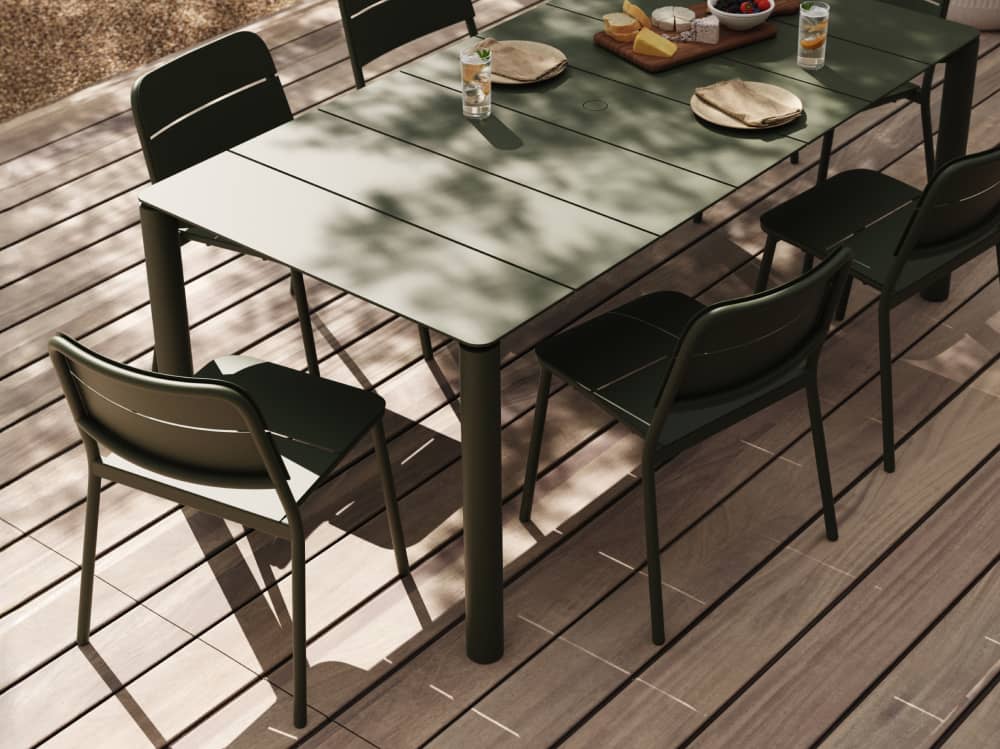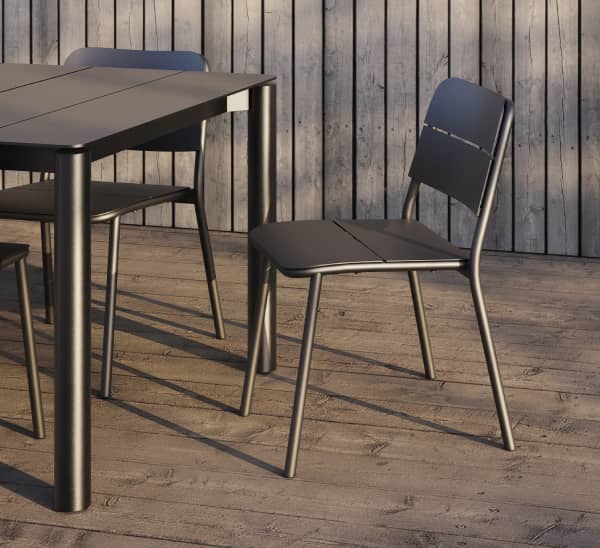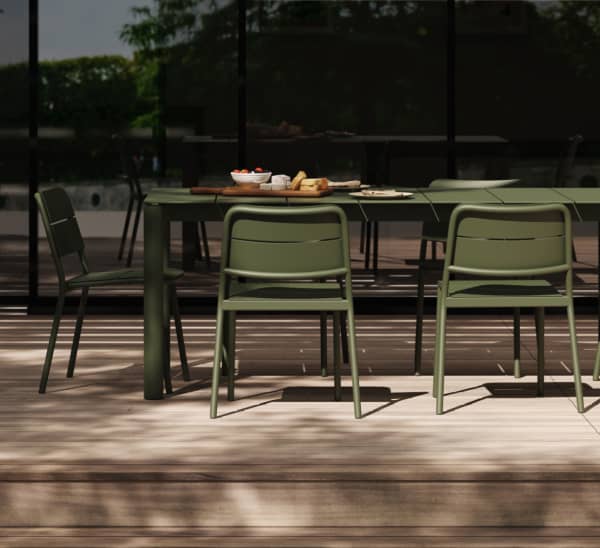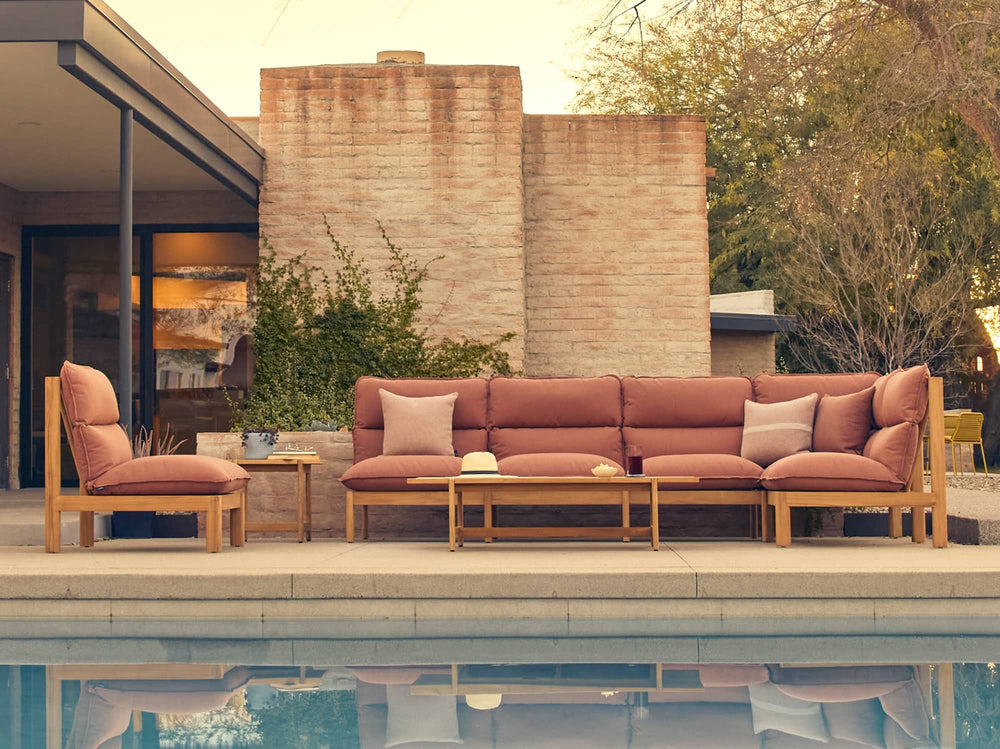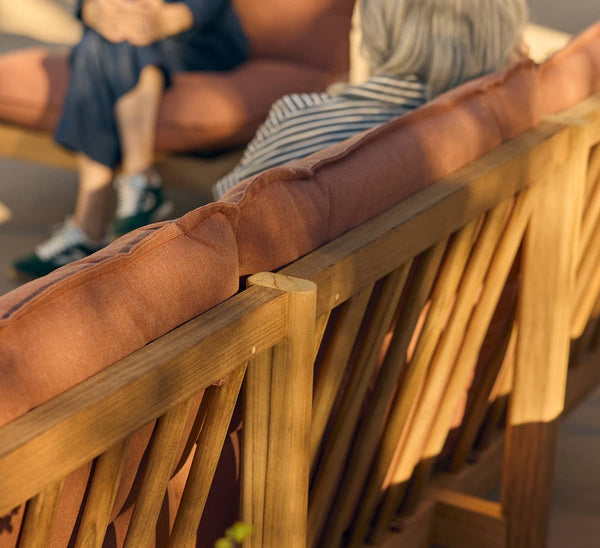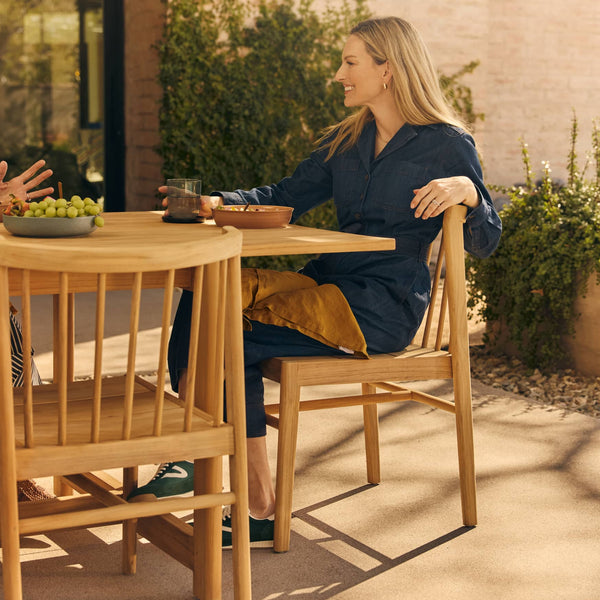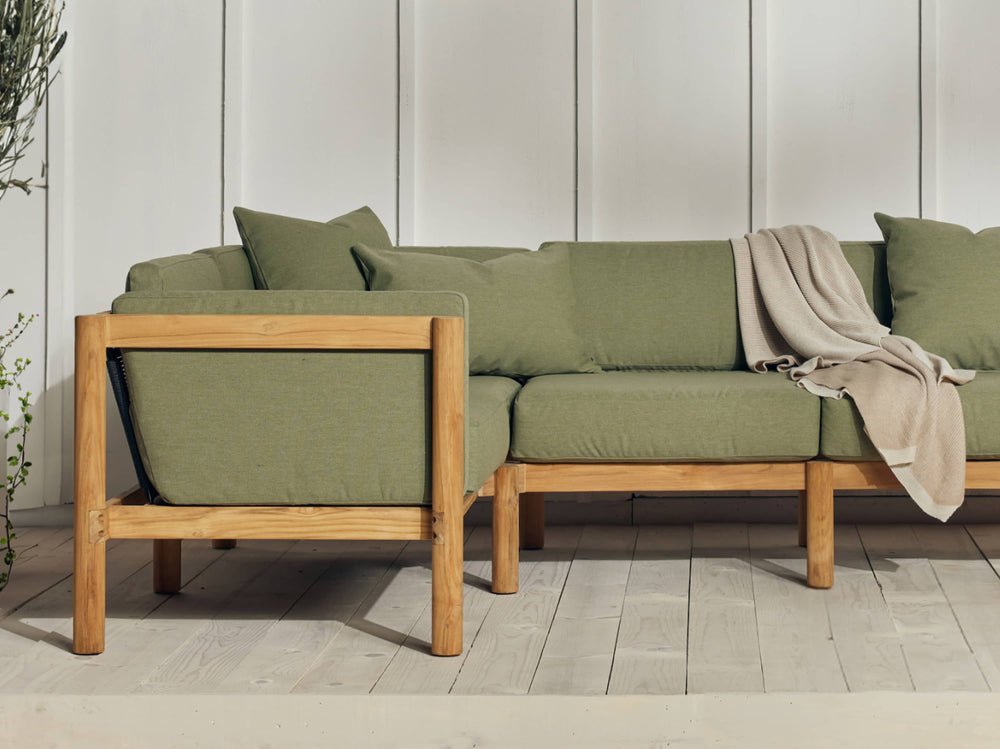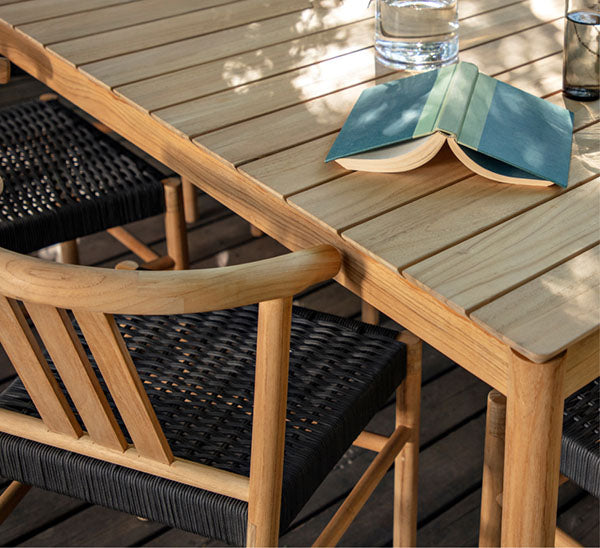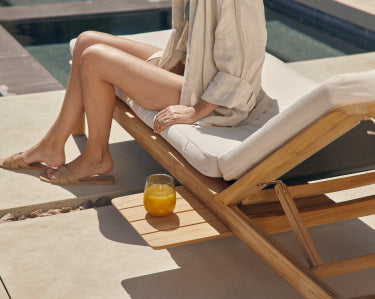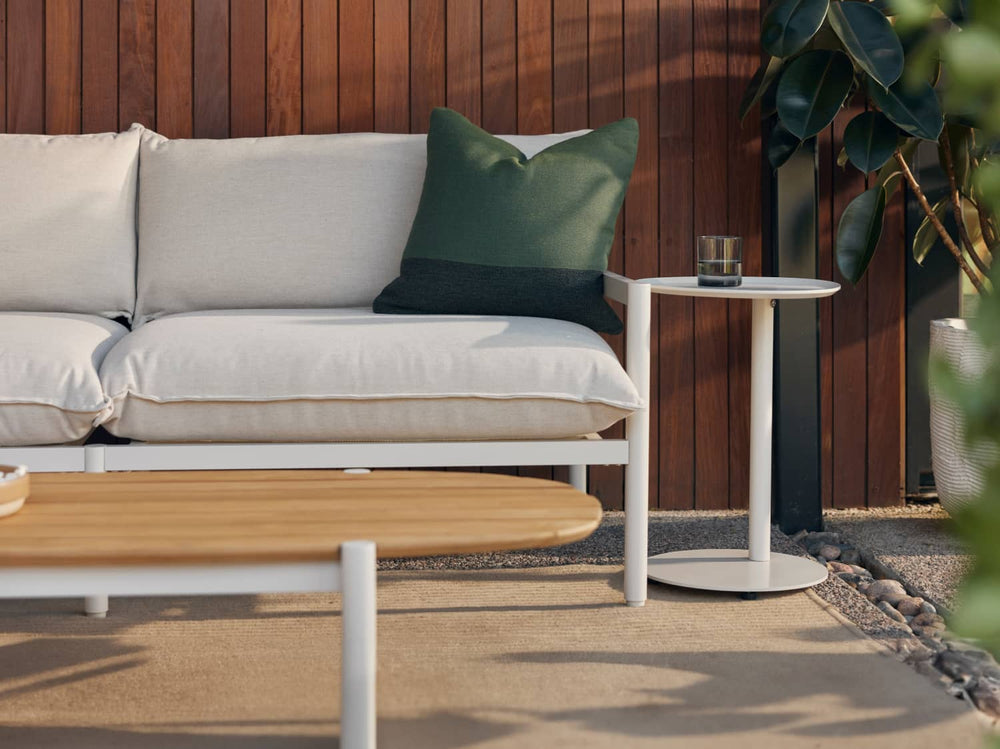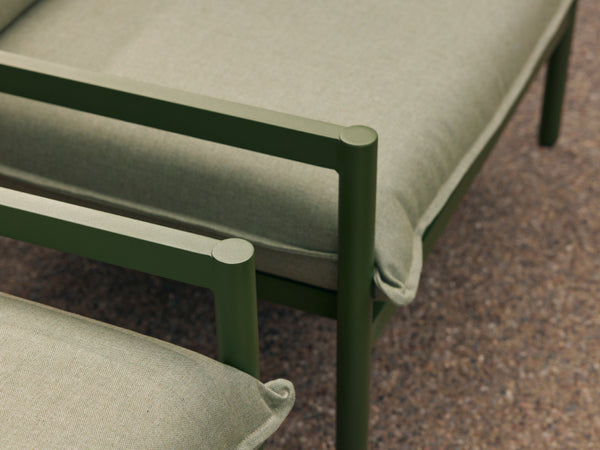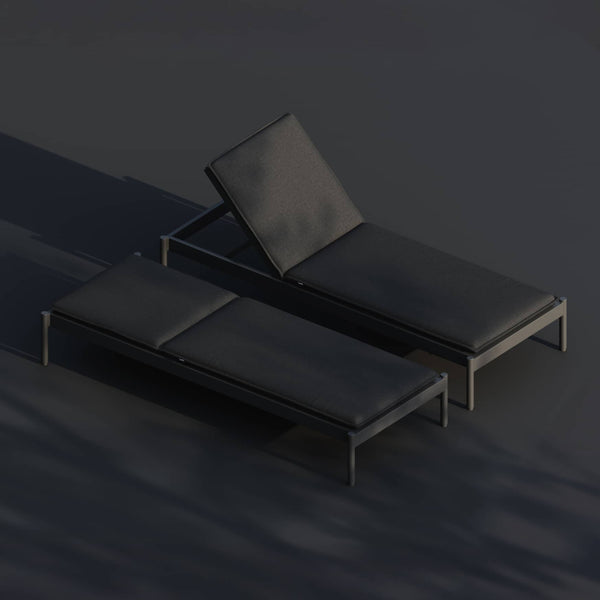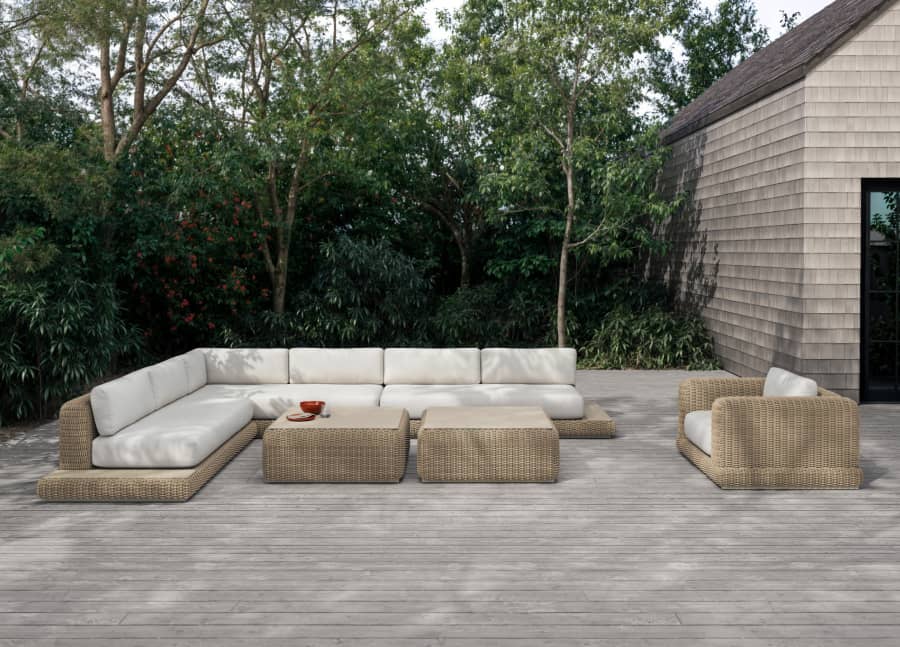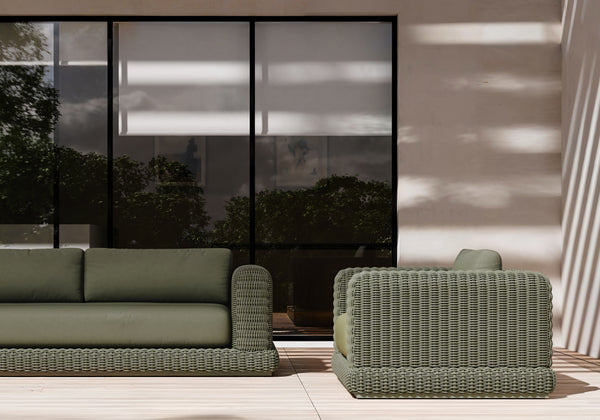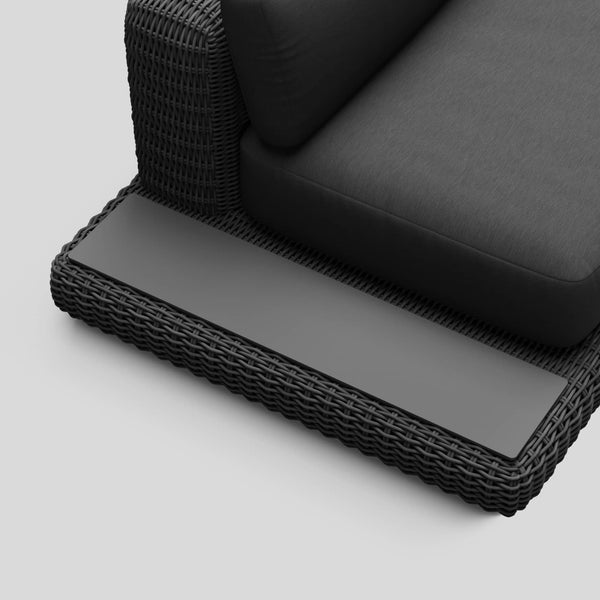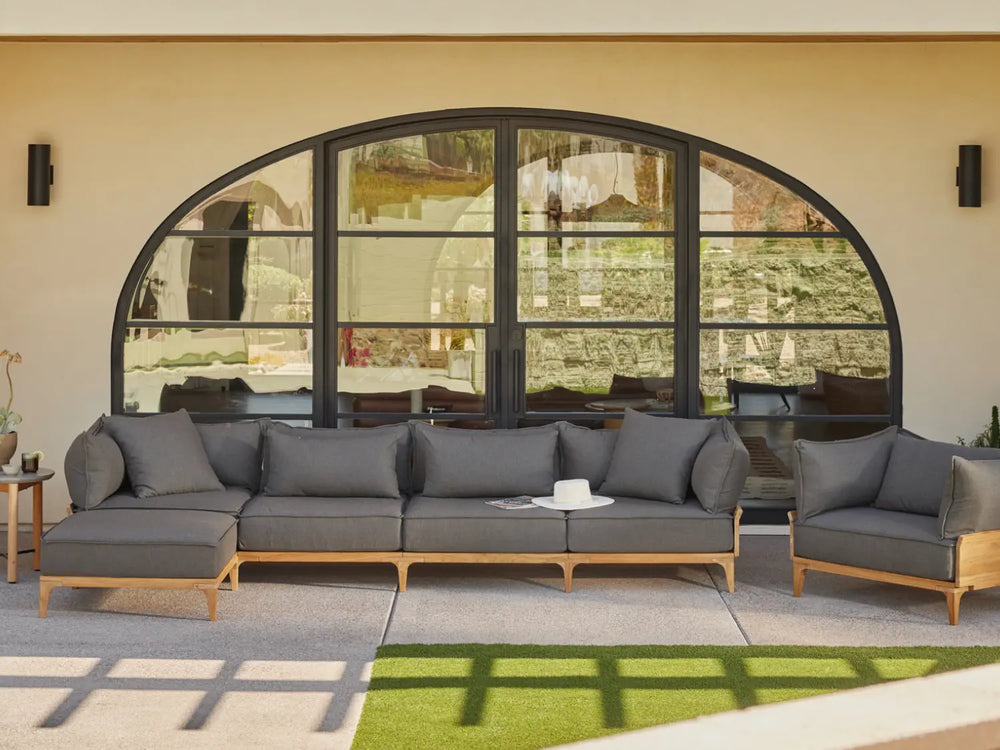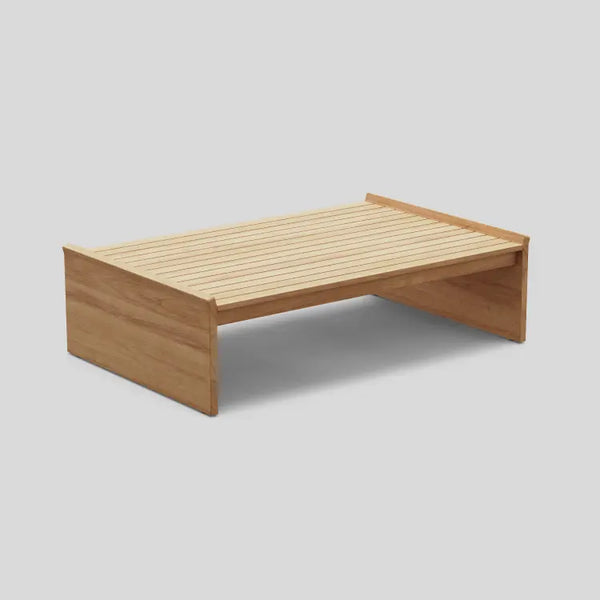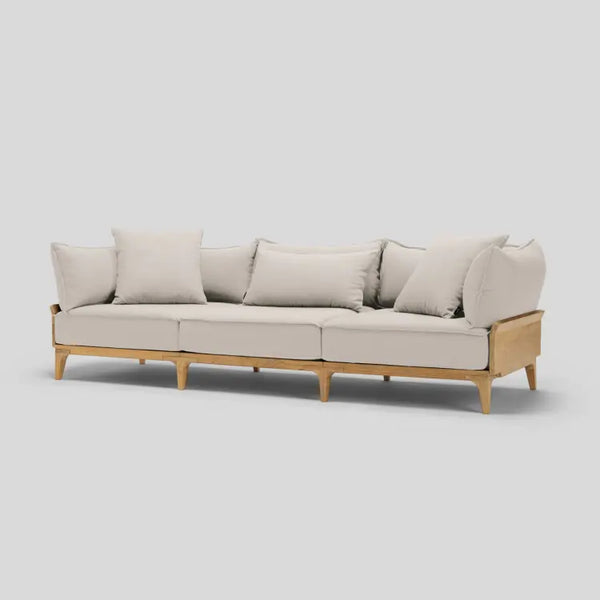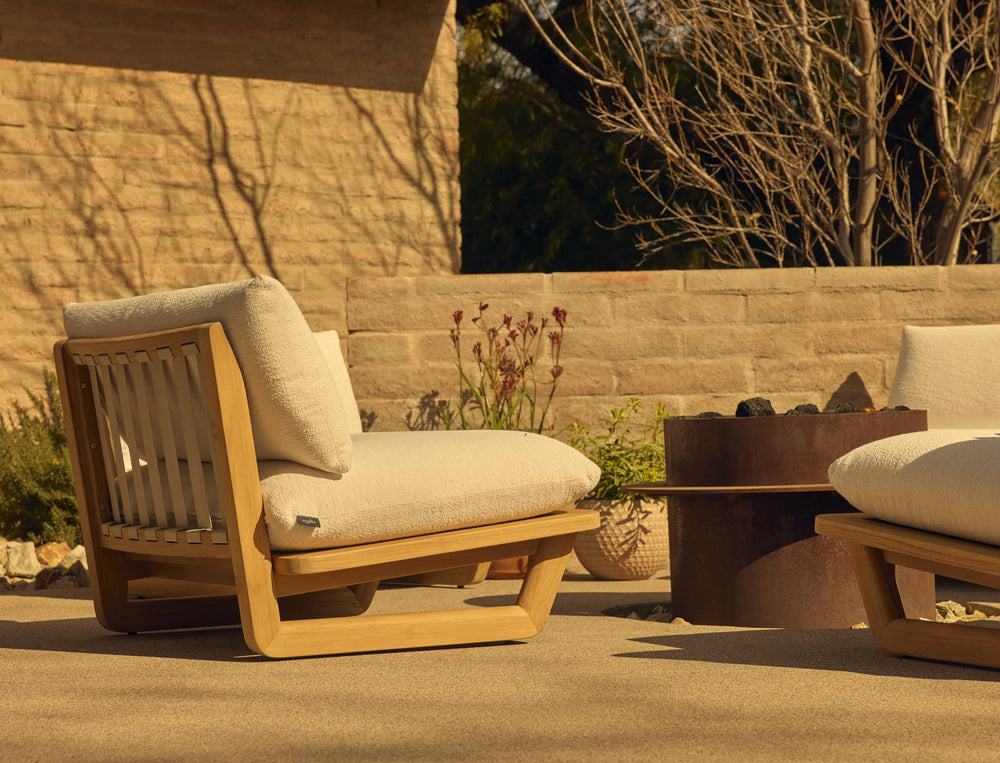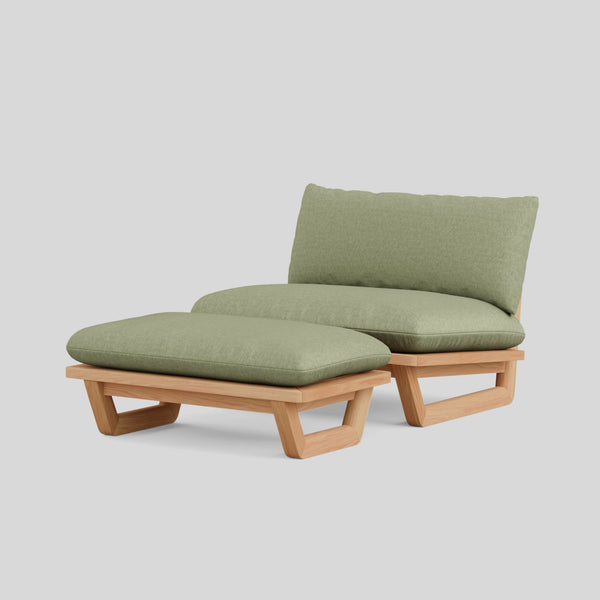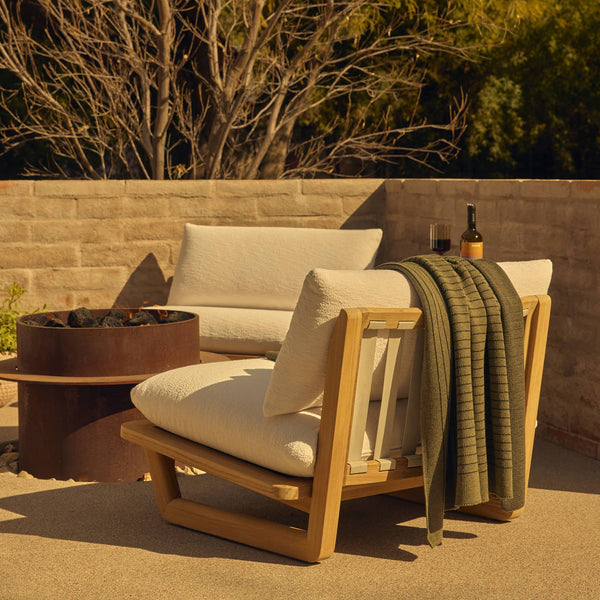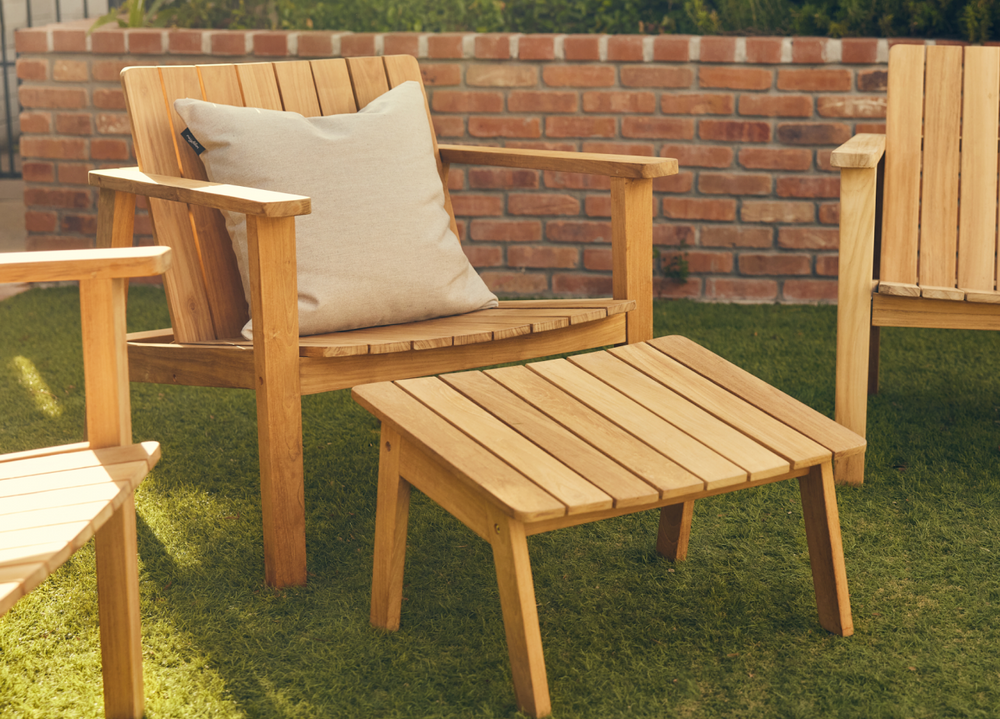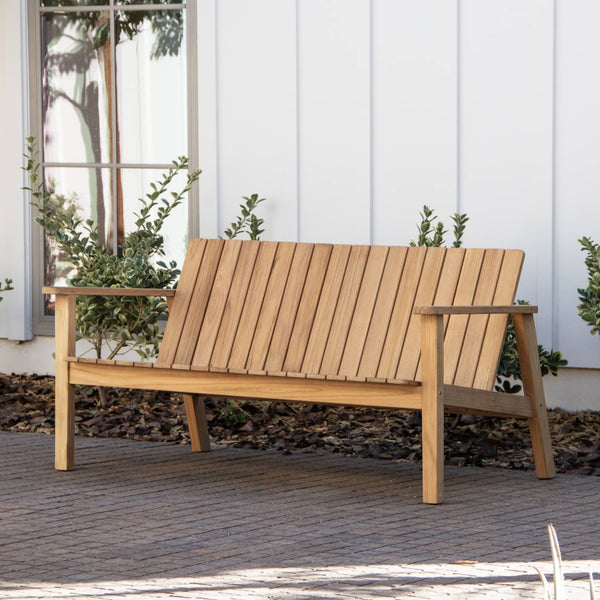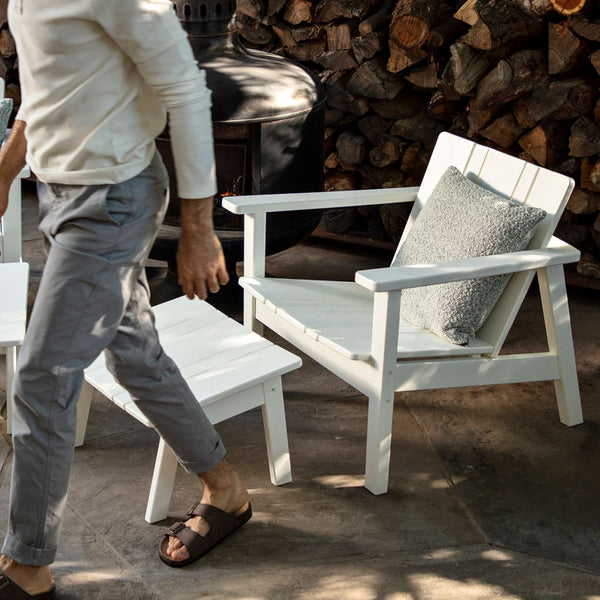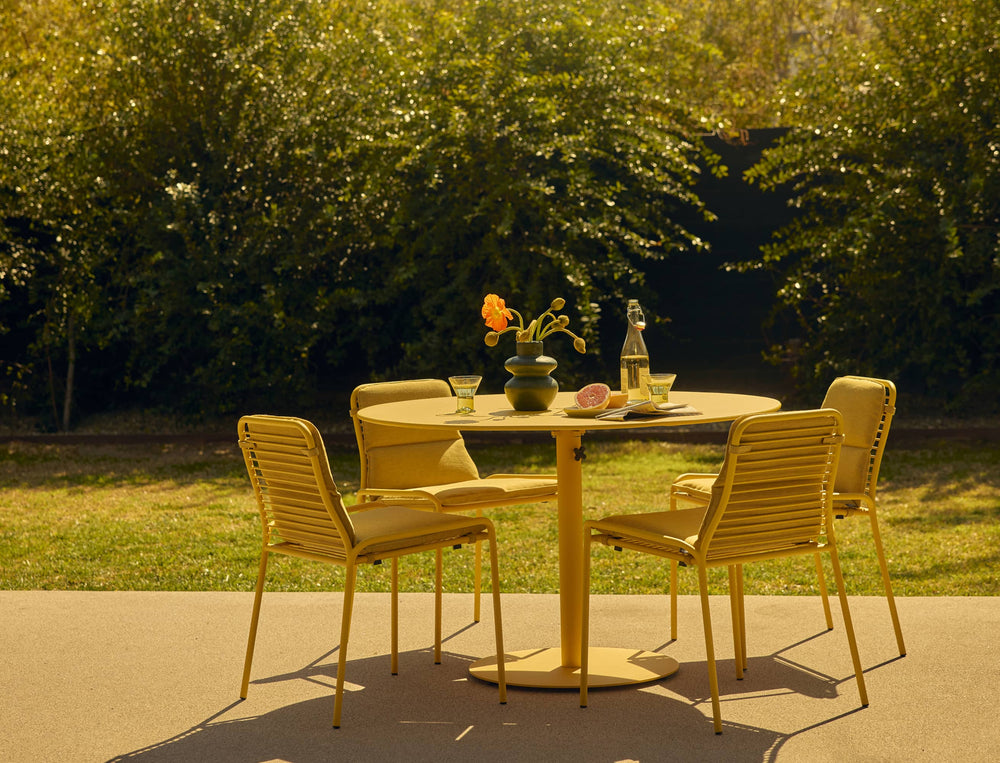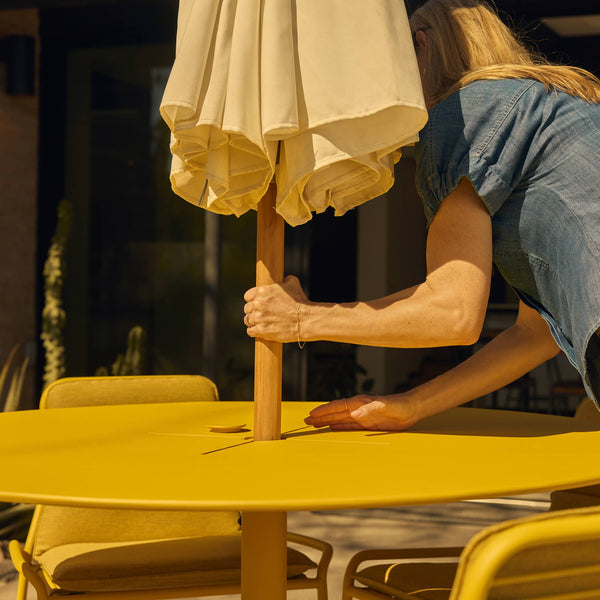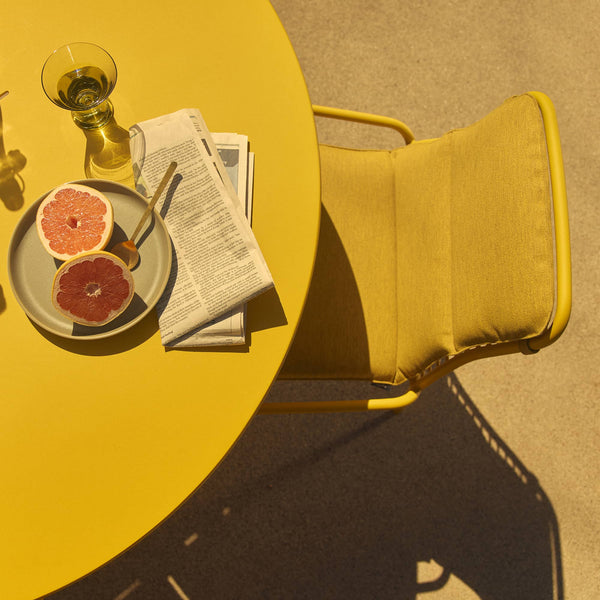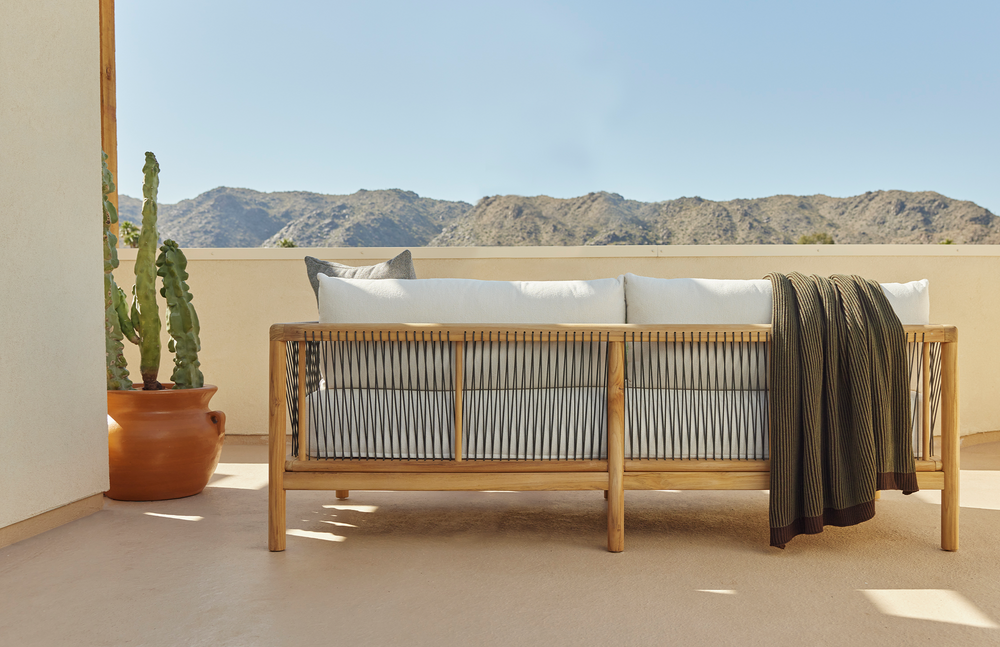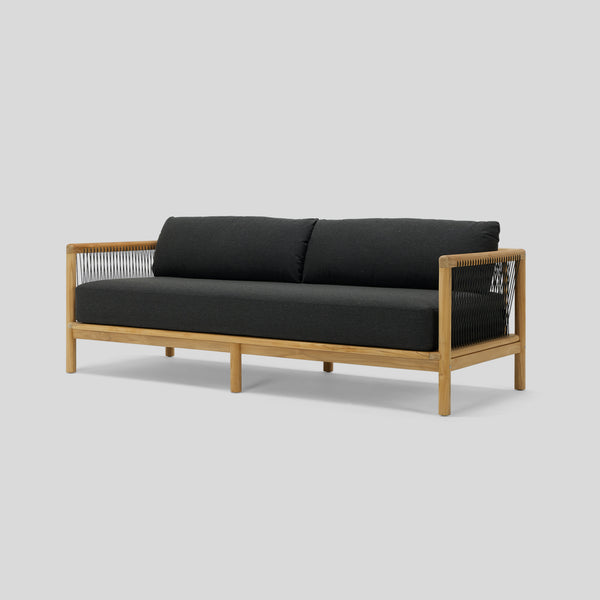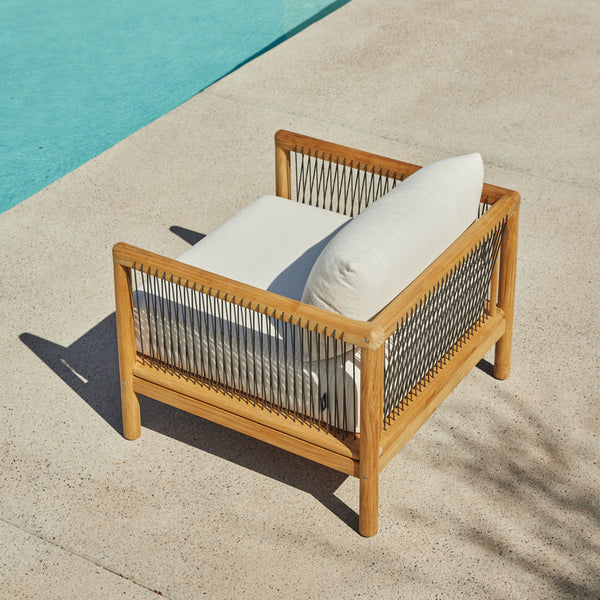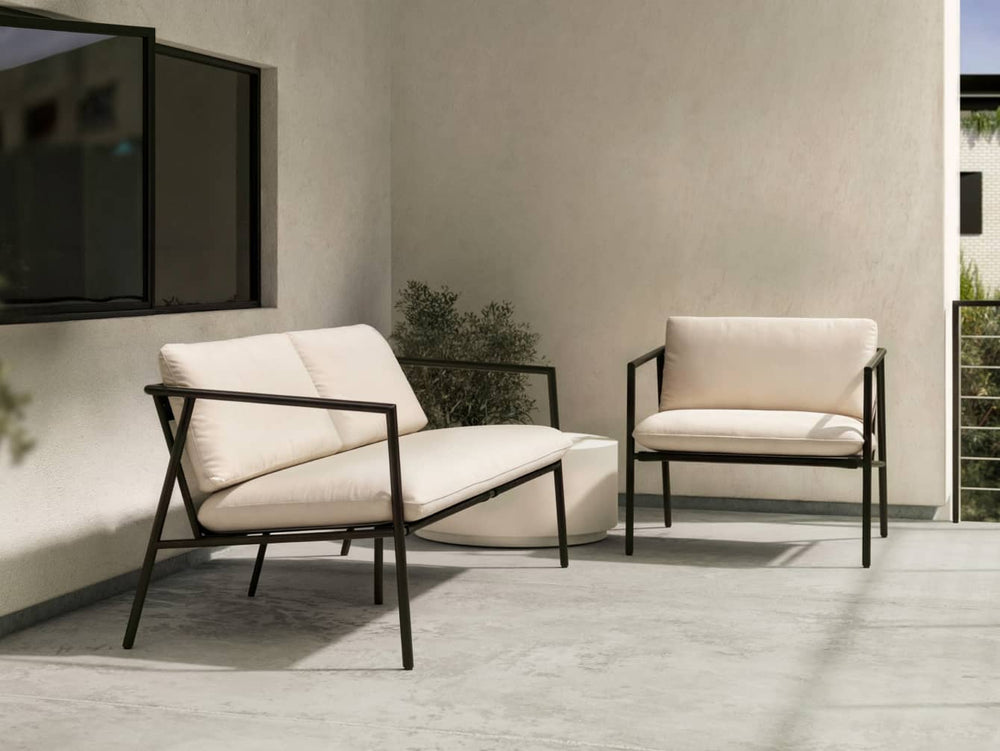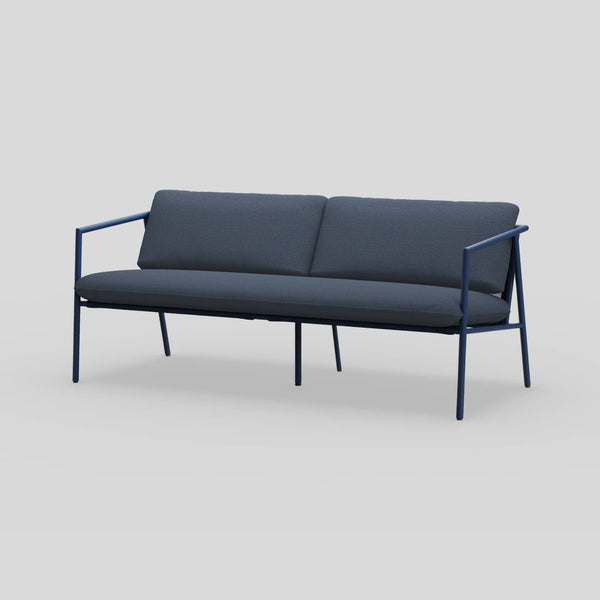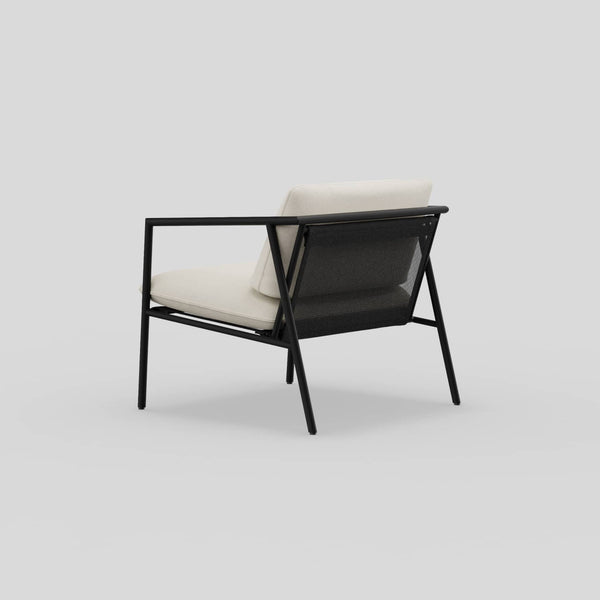How to Choose the Best Material for Outdoor Furniture
Written by Neighbor Editorial Team | @neighboroutdoor | Opens in a new window. |
From weather to maintenance to care requirements, here's everything you need to know about the best materials for outdoor furniture.

When creating your ideal outdoor space, the furniture you choose can make a big difference. For instance, the material of your outdoor furniture will make an impact on not only the look and feel of your space, but the maintenance, durability and longevity of your furniture. Choosing the right materials for your space will ensure long-lasting comfort and all-weather durability. Here’s how to choose the best materials for outdoor furniture, with advice from outdoor furniture product experts.
Factors to consider when choosing outdoor furniture material
Outdoor furniture isn’t one-size-fits-all. When choosing the right materials and designs for your space, consider maintenance and care requirements, the climate in your area, the placement of your furniture and the aesthetic of your space.
Care requirements
Caring for outdoor furniture doesn’t have to be difficult. You shouldn’t have to buy a slew of special cleaning products to keep your space looking and feeling brand new over the years. Popular materials like teak wood, recycled plastic and aluminum that are engineered to endure bad weather, spills and stains, give you the freedom to enjoy your space without worry. With these materials, you can usually simply wipe your furniture down with a soap-and-water solution.
Climate
If you live in an area that gets a lot of sunlight, you’ll want outdoor furniture made of fade-proof, crack-proof and UV-protected materials. In areas that experience dramatic climate shifts from warm to cold, summer to winter, you need outdoor furniture materials made to withstand the seasons without damage.
Fading
Fading in outdoor furniture happens for a few reasons, including UV rays, humidity and heat. Fading can affect both the wood and fabric in your outdoor furniture. When you purchase a patio set with rich-colored cushions, you intend for your pieces to maintain their initial color. Most cloth fabrics are dyed on the outside while the core remains the color of the original material. This causes the fabric to fade during sun exposure and lose its vibrance. To avoid fading in outdoor upholstery, opt for high-quality, durable fabrics, like Sunbrella® fabric. Sunbrella outdoor fabric uses a resilient solution-dyed acrylic that allows color to seep through the entire thread, not just the surface. This makes them fade-resistant, mildew-resistant and stain resistant, which is why we choose Sunbrella fabric for all of Neighbor’s outdoor furniture cushions.
Cracking
Ideally, furniture that lives outdoors throughout the seasons should be resistant to cracking. Cracking in outdoor materials can result from weather fluctuations that cause materials to contract and expand. When rain freezes over, ice melts, dry air intensifies, or the weather fluctuates from cold to warm overnight, outdoor furniture is susceptible to break or split.
Humidity
Outdoor patios that are prone to humidity should feature water-resistant materials. Certain woods can rot, become warped or crack in humid conditions. Humidity can cause metal furniture to rust, corrode, wear down and lose its luster. Consistent exposure to moisture can cause mold and mildew growth, which can leave furniture looking dirty and uninviting but also expose people and pets to health risks. If you live in an area with humidity, it’s best to explore mold and mildew resistant materials, like teak wood and Sunbrella acrylic fabric.
Seasons
If you have winter gear in your closet, you’ll want winter gear for your outdoor patio. A patio exposed to the elements needs furniture built to endure the elements; otherwise, you’ll be bringing your furniture indoors for the winter or summer, or replacing your furniture yearly as it becomes discolored, faded or warped.
Wind
Consider the wind speed in your area. Light weight outdoor patio furniture may be beautiful, but it stands no match against strong winds. You don’t want to chase chairs around your backyard, or have your dining table go airborne from your high-rise balcony - ouch. To prevent storing your outdoor set indoors during windy weather, explore materials that won’t fly away in the wind but also won’t compromise the beauty of your space. Neighbor’s outdoor sofa and chair set checks all the boxes.
Salt
Coastal patios need protection from salty, humid air. If you live in a coastal region, this is a crucial consideration. Salty air wafting off the beach can do serious damage to outdoor furniture that isn’t designed to withstand this climate. For salt water environments, choose weather-resistant materials with durable hardware. Neighbor’s furniture features marine grade hardware, made to withstand exposure to the open ocean.
Where your furniture will be kept

The best outdoor furniture material for your space will also depend on the location of your outdoor space and its degree of exposure to different weather conditions. If your furniture will live in a sunroom, protected from wind and rain but exposed to sunlight all year-round, choosing UV-protected and fade-resistant furniture materials may be in your best interest. Furniture that lives in an outdoor garden with complete exposure to the elements will require weather-proof materials and designs.
If your patio or balcony is outdoors but covered from the sun or rain, you’ll still want high-quality materials that are resistant to cracking or splitting as the temperature changes. With any location for your outdoor furniture, your pieces are likely to be exposed to at least one or two elements. Mold and mildew can grow anywhere with moisture in the air, so humidity or a rainfall can put your furniture at risk of harmful mold spore growth even if your patio is covered.
Which is the Best Outdoor Furniture Material?
Which outdoor furniture lasts the longest? We feel that the best outdoor furniture materials are teak, aluminum, concrete and recycled plastic, due to their durability, easy maintenance, weather resistance, beauty and longevity. Here are the pros and cons of the most popular outdoor furniture materials to help you make an educated decision for your outdoor oasis.
Wood
With natural beauty and appeal, wood furniture can effortlessly enhance the look and feel of a space. Hardwoods are also strong and durable yet lightweight, making these materials ideal for strong structures like outdoor dining tables and chairs that may need to be moved and rearranged on a whim.

Teak
Teak wood is a dense, close-grained hardwood that was the wood of choice for centuries by shipbuilders due to its unique water-resistant qualities. Caring for outdoor teak furniture is simple. Teak furniture is easily maintained with a simple solution of mild soap and warm water, along with a sponge or soft scrub brush. You can also use fine sandpaper or teak cleaner to resolve scratches and larger blemishes over time. Teak wood is weather-resistant and exceptionally durable. Made of natural oils that repel water, real teak furniture is resistant to wood rot, mold growth and pest infestations. Another reason many people choose teak wood is because it only looks better with age. This wood is known for maintaining its aesthetic appeal for decades, even when left untreated. Teak wood starts as a honey-gold color and over time patinas to a soft silvery gray color that gives a natural worn appearance. While teak wood is not the most expensive wood material available, it can be more costly than other types of wood. With teak wood, you get what you pay for. Teak wood may require a higher investment up front, but it can last 50+ years with the right care.
Acacia
Acacia wood comes from Australian-native Acacia trees and shrubs and is known for its impressive durability and density. Acacia wood is similar to teak wood in terms of durability. This common outdoor furniture material is heavy, strong and unlikely to blow away in the wind. The density and weight of acacia wood can make furniture pieces considerably heavy, which may not be ideal for people who plan on redesigning their patio or moving chairs and tables as needed. Acacia wood requires regular oil finish application to prevent decay, water damage and UV damage. This material is also highly sensitive to temperature fluctuations, making it more prone to split, warp or crack as the seasons change.
Metal
Metal is a strong, durable and versatile material that can be shaped into almost any design for outdoor furniture.
Aluminum
Whether it serves as the frame of an outdoor chair or table or comprises the piece completely, aluminum is one of the most common outdoor furniture material options in contemporary design. Durable yet lightweight, aluminum is made to withstand a variety of weather conditions without weighing your porch or balcony down. Aluminum furniture is easily moved and stored when necessary. Aluminum creates a timeless, clean aesthetic and complements a variety of colors, woods and fabrics. With a painted powder coating, aluminum becomes resistant to color fading. Naturally resistant to rusting, aluminum is ideal for outdoor spaces exposed to rain, areas with a lot of humidity and coastal regions. Aluminum is also easily maintained with a simple mild soap and water solution. If you live in a high-wind environment with no cover over your outdoor space, aluminum furniture can be risky. Due to their lightweight composition, outdoor aluminum pieces may go airborne under harsh conditions. Aluminum on its own isn’t as comfortable as other materials, like teak wood, unless you add a thick cushion like our Sunbrella outdoor cushions or choose pieces with soft materials woven over an aluminum frame.
Steel
Stainless steel is the strongest outdoor metal material available. Often used for dining tables, sofas and chairs in restaurant or commercial settings, steel is a high-density, sturdy metal. Stainless steel is a highly durable material and will not dent easily. Furniture made of stainless steel is not likely to blow away in the wind. With a sleek and sophisticated look, stainless steel complements modern and contemporary designs. While steel weighs less than other metals like wrought iron, steel is still on the heavier side of the spectrum.
Like iron furniture, steel furniture can prove to be a challenge when moving or rearranging furniture. Stainless steel can also vary in quality and durability. It is inexpensive and long-lasting but isn’t as warm and inviting as other materials like wood. It is possible for stainless steel to rust, making it not as ideal for outdoor spaces exposed to rain. Stainless steel also serves as one of the more expensive materials for outdoor furniture.

Synthetic resin and plastics
Synthetic materials like resin and plastics have become more common in the outdoor furniture industry in recent years.
Recycled Plastic
Made from post-consumer products, like plastic bottles, milk jugs and shampoo bottles, recycled plastic furniture is a unique, eco-friendly solution for your outdoor patio. Recycled materials are known for their durability, water resistance and low maintenance requirements. Stains can be removed with a warm soapy water solution and this material retains its original color and vibrance for years. Recycled plastic designs are often more affordable than other materials. Plus, this material has a positive environmental impact, which is a major advantage to recycled plastic furniture. Recycled plastic furniture converts plastic waste that would otherwise end up in landfills or our oceans into highly-customizable, long-lasting furniture. Recycled plastic is a lightweight option, making it susceptible to strong winds and harsh weather conditions. Furniture made of recycled plastic should be stored and secured before storms. While recycled plastic is strong and durable, it can still be damaged in extreme weather conditions.
Wicker
Wicker is a man-made material composed of high-density polyethylene, a strong type of plastic. Wicker is lightweight, easy to clean and comes in a variety of shapes, styles and designs. It can be designed to resemble natural wicker. Often designed with an aluminum frame, synthetic resin wicker furniture is strong and supportive. Although sometimes called ‘all-weather wicker’, synthetic resin wicker furniture is still susceptible to damage from high winds and consistent sun exposure. Wicker is lightweight and may not stand the test of time in windier environments. This material can also rot and grow mold or mildew in wetter environments.
Building materials
Sealed Concrete
Sealed concrete is often used as the base for outdoor tables or a surface atop a metal frame. Concrete is one of the most versatile outdoor furniture materials. It can be poured into a variety of different designs and customizations. Highly durable and resistant to extreme temperatures, concrete is an ideal material for outdoor spaces that are exposed to the elements. Concrete has an undeniable appeal. It brings sophistication and modernity to a space and can pair easily with different woods and various fabrics. Neighbor’s round side table features hand-poured concrete that complements the warmth of the teak wood base and makes a bold statement in your outdoor space. Even when concrete is sealed, it is not impermeable to stains due to its natural porous qualities. However, concrete surfaces can be washed with a mild laundry detergent solution. When you hear ‘concrete’, you likely associate it with heavy weight. Concrete is a heavy material that may not be ideal for bigger pieces of furniture or outdoor spaces that require frequent rearranging.
What is the best fabric for outdoor furniture?

When choosing the right fabric for your outdoor furniture, durability and easy maintenance are key. Beauty is an important consideration too, of course. Ideally, you don’t want to spend a lot of time or energy cleaning outdoor cushions. Sunbrella fabric is a popular choice, because it is resistant to stains, mold and mildew growth, fading and UV damage. This trusted outdoor cushion fabric is some of the easiest to maintain and some of the longest lasting fabric on the market.
How does Sunbrella compare?
Sunbrella vs. Cushionguard: Sunbrella has a 5-year warranty, whereas Cushionguard has a 3-year warranty. Sunbrella is naturally fade resistant and UV protected, whereas Cushionguard is known to fade over time. You can use stronger chemicals (like bleach) on Sunbrella fabric, whereas CushionGuard is designed for more mild cleanings.
Sunbrella vs Olefin: Olefin fabric is often found at Home Depot and Lowe’s department store. While it is water resistant, Olefin fabric is not naturally resistant to UV rays and can melt in extreme heat. Sunbrella is resistant to all types of weather.
Sunbrella vs Outdura: Outdura fabric is the closest comparison to Sunbrella fabric, but Sunbrella fabric is known to be more fade-resistant than Outdura.
Creating the perfect space for outdoor entertaining means finding fabrics that are comfortable, soft to the touch and high-quality with a long lifespan. At Neighbor, we care about our furniture’s durability and work with the highest-quality materials we can find, which is why we choose Sunbrella fabric as for our outdoor furniture.

